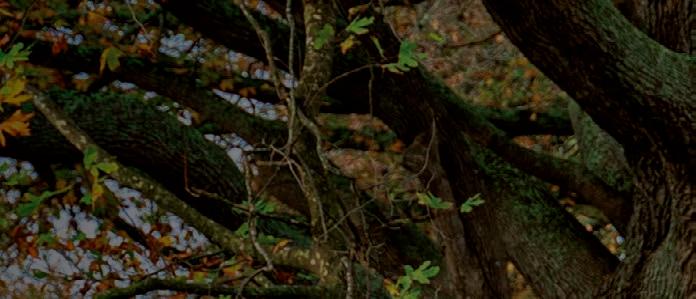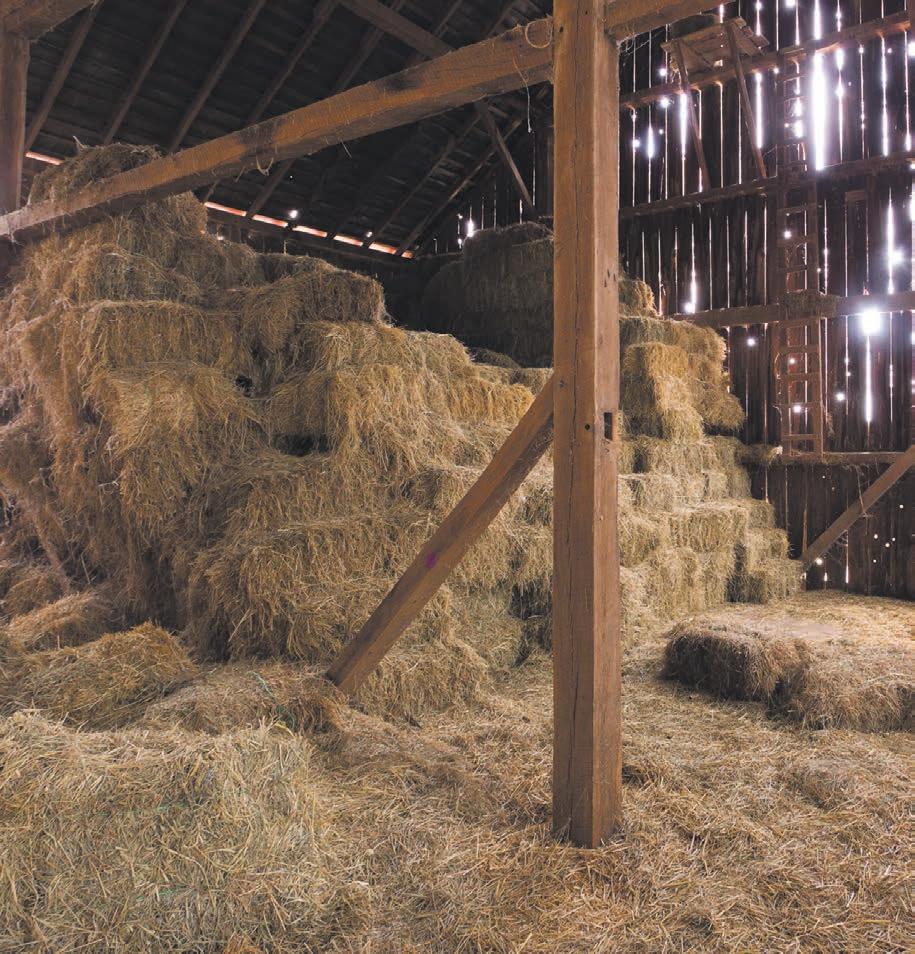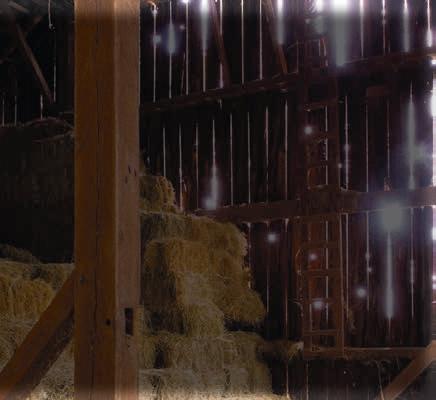




























































I am reminded I have directly offended at least 500 rural industry workers.
And probably annoyed hundreds more who are associated with the dairy industry at large. Tha’s a reasonable amount of damage.
I put it down to a slip of the tongue, or because I am on a keyboard a slip of the fingers, perhaps a serious gap in my education, or a reporter’s inattention to detail. Or all three.
So I tender my abject apologies. It was my bad, my mea culpa and am so sorry from the deepest depths of a standard 50 litre milk churn. I fall humbly on my pitch fork.

And my crime – well last month as I was banging on about the mind-numbing futility of Daylight Saving, I mentioned the poor cows and how their body clocks were all skew-whiff after theTime Lord put the clocks back yet again.


Easy for the Time Lord and the townies, but the cows just don’t get it. Neither do I.
I said this – “I tried to explain to them (the cows) that because of the adjustment of Daylight Saving

the word ‘milk truck’ when apparently I should have more accurately said ‘milk tanker’. Pfft!! emantics, I mumbled in my own defence. Pedantry. Petty stuff. What’s the diffeence? Who cares?

Well Mr Smarty-Townie-Pants, all the good people who drive the milk tankers care, the dairy industry cares. You know, the $18.6 billion a year dairy industry that represents 5.3 per cent of GDP and 23 per cent of total exports. They all cae.

“Listen up,” said the work wife who owns her own gumboots and doesn’t mind rolling up the sleeves and getting her hands dirty. She’s of good Northland rural stock and she was about to educate me.


A ‘milk tanker’ is a mobile bulk container used to transport milk or fluid milk fom the farm to the plant or from plant to plant. The term includes both the over-the-road semi-tankers and the tankers that are permanently mounted on a motor vehicle. Got it? And a milk truck is, by definition, a small motor vehicle used to deliver milk to houses and shops. Something quite diffeent. And there is also something called a ‘milk floa’ – something that Ernie of “the fastest milk cart in the west” fame
 Hunter Wells
Hunter Wells
If your property was impacted during this
The Temporary Accommodation Service is assisting displaced people to find suitable temporary accommodation.

Register your details with us and a staff member will call you in a few days to help you find suitable temporary housing. Our staff can also provide guidance on how to access support services such as insurance advice and financial assistance.
There will be a cost for temporary accommodation, but you can contact the Ministry of Social Development to see if assistance is available to meet this cost.
weather event


need support finding temporary accommodation, we can help.



If you are the tenant or landlord of a rental property, www.tenancy.govt.nz has information on your rights and obligations after a natural disaster.


For more information and to register your details, please go to: www.tas.mbie.govt.nz
If you are not able to complete the form online, or wish to discuss your requirements, please call 0508 754 163 Our Service Centre operates:
Monday–Friday, 8:30am–5:00pm Saturday–Sunday, 9:00am–5:00pm

severe
and you
Crown-iwi settlement for the river and its catchment.
The egional council says it will work with mana whenua on compliance with the rāhui.
It acknowledged the district council had been served with a notice in 2019 over non-compliant discharges related to nitrogen, phosphorous and the bacterium E. coli.

TheTe Kauwhata plant is being rebuilt to help make necessary improvements and other measures have been taken to address issues.
But “the abatement notice will remain in place until the plant is



Just ahead of duck shooting season starting this month, local hapū have declared a month-long rāhui (ban) on gathering birds and fish fom north Waikato’s polluted Whangamarino wetland, a popular site with hunters.
At this stage, it’s unclear whether the rāhui –supported by Waikato-Tainui – will affect the whole of the wetland or fie specific aeas.
Ngāti Naho hapū claims negotiator Haydn Solomon says the rāhui, formally announced last month at a ceremony in Meremere, follows ongoing significantcontamination of Lake Waikare by non-compliant discharges of wastewater from Waikato District Council’s Te Kauwhata wastewater plant.
The lak’s outlets flw directly to the Waikato River and into the wetland.
“When they open the wetlands [to release water to the river] it’s like flushing the toilet
“It’s a breach of our river settlement,” he says, a reference to the Crown-iwi co-governance arrangement for the Waikato River.
Haydn believes the discharges contributed to the current situation which has seen thousands of wetland birds die from avian botulism, as well as fish deaths
The rāhui comes just ahead of the nw duck shooting season starting on May 6 locally.
Fish and Game’s Auckland-Waikato chief executive Ben Wilson says he understands from a Waikato-Tainui media release that duck shooting won’t be affected. e has only just found out about it.


“We’ll see how it goes.”
But an iwi spokesperson says the rāhui will apply to fie specific aeas. “Duck shooting, everything, is included.”
He expects the Department of Conservation will be putting out information about the rāhui and
erecting signs in areas where it applies.
Hadyn says talks are due with DOC and the regional council about rāhui enforcement.
On the rāhui only applying to fie areas, he says: “We would prefer the whole [wetland].”

This will be discussed withWaikato-Tainui.



He says the rāhui’s timing isn’t “tactical” to ramp up pressure at duck shooting time but reflects frustration at the district council.
Hadyn acknowledges the rāhui has no legal force. “It’s one in spirit.”
But Ngāti Naho plans to talk to council official and the Department of Conservation about enforcing it.
The goal is potecting people’s health.




The rāhui – and its possible extension – would be re-considered this month.
The chairperson ofWaikato-Tainui’s Te Arataura executive, Tukoroirangi Morgan, strongly supports the rāhui.
“This is ew Zealand’s largest wetland severely impacted by toxins.”

He feels people taking birds and fish at this time would “foolish”.
“Having the rāhui over Whangamarino is ... the first step twards proceeding with a more restorative approach.”
Tukoroirangi also feels the situation breaches the
fully compliant with the consent conditions”, says the regional council.

A district council statement says the Te Kauwhata plant upgrade, being done in consultation with WaikatoTainui and mana whenua, is due to finish y the end of the year.
”While non-compliance is always a concern, council is taking active steps to address the issue,” says a statement.
On the council’s improvements, Hadyn says: “This should hae been dealt with years ago. It’s kind of the ambulance at the bottom of the cliff”


Wood chip for sale
Orchard shelter removal
Stump removal
Woodlot marketing of all tree species




• Removal / chipping of whole trees

• On site chipping for stand off pads
• Wood chip for sale

• Orchard shelter removal

• Stump removal
• Woodlot marketing of all tree species

After an unexpected change in career direction during Covid-19, 24-year-old Natasha Price has won the New Zealand Dairy Industry Awards 2023 Waikato Dairy Trainee of the Year title along with one merit award.

Natasha was brought up on a dairy farm in the Hauraki Plains but wasn’t looking to be a farmer. As with many school leavers she decided to do a degree in her areas of interest – biology and chemistry, resulting in a Bachelor of Science from Massey University, with a double major in Zoology and Ecology.



She started a Post Graduate course in February 2020 to train as a secondary school teacher and realised very fast that it wasn’t what she wanted.
“I returned home and within days Covid happened and we were locked down,” says Natasha.


As a child, Natasha had always enjoyed being around cows and had numerous pet ones, but she hadn’t worked on farm.
“I had nothing to do so I helped out on the farm alongside my dad, soaking up decades of knowledge from him and looking up information online about courses and careers in farming.”

As soon as things opened up after the July 2020 calving, Natasha did a three-week Go Dairy course. It was a week online and two weeks at Dairy NZs research farm, Scott Farm in Ruakura.
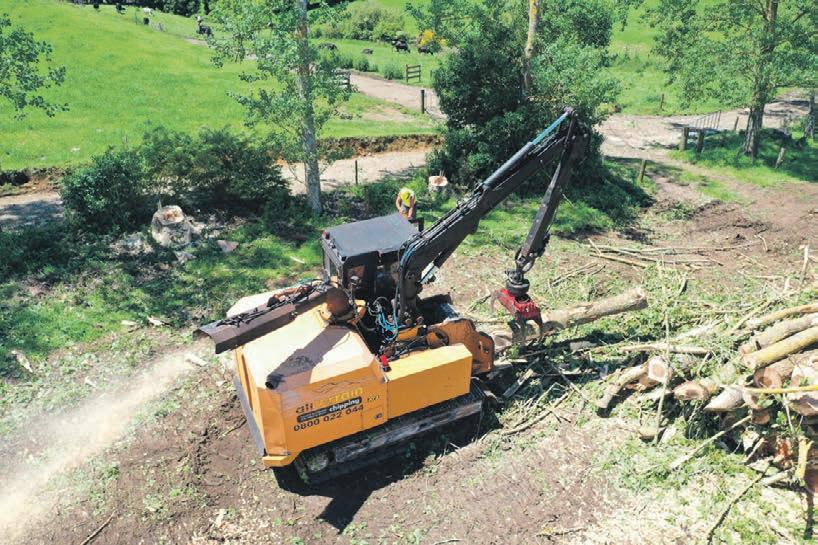
“Dad is quite old school but at Scott Farm I got to see a cow collar system in action and all the other modern research and technology they trial. I was really drawn to farming as a career when I realised I could mix my passions – animals, science, and technology.”
Natasha’s ÿ rst job was with Paul and Kate Manion, themselves previous Farm Manager category winners at the NZDIA. It was them that encouraged her to enter the awards.
° ey had bought and further improved a 108-hectare dairy farm near Morrinsville and milk 280 cows. It was once a sheep and beef farm.

“° ey have put in wearable heat detection ear tags, auto cup removers, auto teat sprayers, auto drafting and meal feeders.












“° ey’ve also upgraded the e˛ uent and water reticulations putting in more troughs in better positions around the farm.”
Natasha is excited by this use of technology and really sees the beneÿ t to both cows and sta˝ and how farming is made more e˙ cient, humane, and better for the environment by using technology. She is currently completing a New Zealand Apprenticeship in Agriculture Level 3 and 4, with Primary ITO, with Paul and Kate as her Primary ITO veriÿ ers.
“I’m always pleasantly surprised by the number of females in the industry and love that scientiÿ c research forms the basis of





everything we do as farmers.”

After two years farming herself, Natasha says the best part is hanging out with cows all day.


Natasha and her partner Declan Tully, who also dairy farms, are heading o˝ after calving to the UK for two years to experience agriculture overseas.
“We have a couple’s position milking 300 Friesian cows twice-a-day, on an autumn calving farm.”

“° e owners both came to New Zealand for their OE and milked cows and are really interested in following the New Zealand dairy farming model.”
Natasha and Declan are working to fund a few months of travelling, without going backwards ÿ nancially from where they are now, before they come home and work hard towards their goal of sharemilking in 2030.

Natasha is interested in moving into a scientiÿ c role in the future but would always want to keep working on farm in some capacity, always keeping the balance between her passions.






“The call of nature can be kind to Nature”
“The call of nature can be kind to Nature”
“The call of nature can be kind to Nature”
NO POWER
NO WATER
NO CHEMICALS
NO POLLUTION
NO DISCHARGE INTO ENVIRONMENT
NO POWE NO WATER NO CHEMICA NO POLLUTIO NO DISCHARGE INTO ENVIRONMENT

National’s ÿ rst tranche of announcements on changes to farm regulations is a signiÿ cant step in the right direction, says Beef + Lamb New Zealand CEO Sam McIvor.

“We agree with the proposed changes announced today to some of the freshwater rules relating to the low slope map; freshwater farm plans and winter grazing.
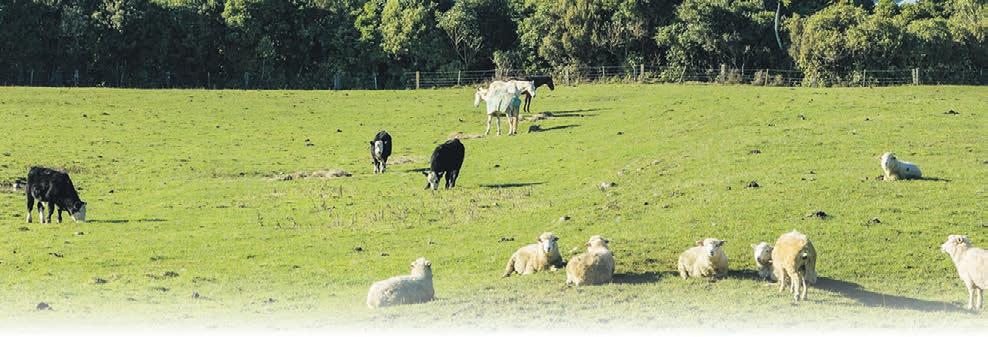
“It’s also pleasing to see National’s announcement address the fair deÿ nition of a Signiÿ cant Natural Areas to ensure that the right areas of our precious biodiversity are protected.”
These toilets are the good looking, sensible answer to human organic waste management. Environmentally friendly, they are economical, easy to install and require little maintenance.
These toilets are the good looking, sensible answer to human organic waste management. Environmentally friendly, they are economical, easy to install and require little maintenance.
Last month, National’s Agriculture spokesperson Todd McClay and Environment spokesperson Scott Simpson said there would be sweeping changes to farm regulations which would improve access to workers, restore local decision-making, and protect food production, should National win the 2023 general election.
Sam says a major concern for sheep and beef farmer is the scale and pace farms being sold to convert into forestry, which is driven by the carbon price.
Toilets are vented so there are no unpleasant odours, no need for toilet cleaners or room deodoriser. They meet all required NZ Standards and building codes and are in use by DOC and regional councils. Right from the start Bio Loo is cost effective to purchase and easy to install compared to other systems. You can leave the system to work for you and in the end will have safe, composted material. Great for you - Better for the planet!
Toilets are vented so there are no unpleasant odours, no need for toilet cleaners or room deodoriser. They meet all required NZ Standards and building codes and are in use by DOC and regional councils. Right from the start Bio Loo is cost effective to purchase and easy to install compared to other systems. You can leave the system to work for you and in the end will have safe, composted material.
These toilets are the good looking, sensible answer to human organic waste management. Environmentally friendly, they are economical, easy to install and require little maintenance.







Great for you - Better for the planet!
THE SPECIALISTS IN COMPOSTING TOILETS CONTACT ROY 027 740 1299 OR 0800 246566
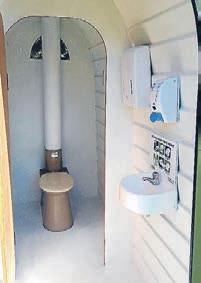



Sam says B+LNZ has been calling for policy changes in line with National’s announcement for some time, including through the Kiwis backing farmers campaign.
“New Zealand is an outlier internationally in allowing 100 per cent of o° setting of emissions through forestry,” he says.

“˛ is must be addressed by putting limits in the ETS on the amount of o° setting fossil fuel emitters can do before any price on agricultural emissions is introduced.

“In the short term we support looking at the OIO settings, because foreign investors are currently beneÿ ting from New Zealand’s unique policy settings that allow forestry to also gain signiÿ cant revenue from carbon credits. But ultimately, we need to see reform of the ETS itself as that is what is driving the issue.”
Toilets are vented so there are no unpleasant odours, no need for toilet cleaners or room deodoriser. They meet all required NZ Standards and building codes and are in use by DOC and regional councils. Right from the start Bio Loo is cost effective to purchase and easy to install compared to other systems. You can leave the system to work for you and in the end will have safe, composted material.


OR 0800 246566

“It’s pleasing to see National’s recognition of environmental and economic outcomes, which is essential for the long-term viability of the agricultural “We need to see further details, but it’s encouraging that they are trying to correct some of the existing unworkable rules that B+LNZ has been raising disproportionately impacted by the recent raft of
Great for you - Better for the planet!
CONTACT ROY 027 740 1299 OR 0800 246566
B+LNZ will continue to advocate with all parties on key policy issues a° ecting sheep and beef farmers leading up to the election as outlined in our policy manifesto, says Sam.


˜ is year Allan Noble celebrates 60 years of marriage to wife Jill, and 60 years of owning and working on the same property, the Onion Vegie Place at Katikati.


He should know his onions. His father grew them, and when Allan Noble bought his signature State Highway 2 property at Katikati 60 years ago it was the ÿ rst crop he put down.

But it was almost his undoing; it could have sent him to the wall.
“° ere was a glut of onions. ° e world was awash with onions.”
He can laugh about it now, but at the time people were suggesting he wouldn’t last ÿ ve years.
“We had a bank manager who was leaning on us and saying: ‘You still have to pay us the money’. It was a tough entry into the real world.”
But Allan is a pragmatic and curious person, and if there’s a problem there’s always a solution. So they set up the ‘drop-in’ vegie place, retailing to locals from his own backdoor, to generate some cash, to keep the wolves away from the door.
“Too many farmers, growers, horticulturalists complain about having a bad year. Well, get over it –life’s like that. Do what you can and learn from it.”

Allan learned. And from those lessons he has just celebrated 60 years of marriage to wife Jill, 60 years of owning just one property, the Onion Vegie Place – which is a local institution – and 60 years of doing the same job!
“If you are enjoying it, why change the game?”
And he’s still enjoying – the 82-year-old started work at 8am the day ° e Weekend Sun dropped by – and he planned going through to 5.30pm.
“And eight days a week.”˛



° e ‘Onion Man’ they call him, but he doesn’t even like onions. He’d prefer a nice Agria spud –not to waxy, not too ˝ oury and a robust ˝ avor.
“° ey’re a complete food. You wouldn’t get sick just eating a potato.”
But he does eat onions, only raw ones, because they’re good for you. Every day an onion and honey sandwich. Before you gag at the idea, there’s bush science at play here.
Allan was “on holiday” at an onion conference in Australia – he ÿ gures if you are not going to work, you may as well learn something – and a presenter was describing a project involving onions and pigs.
Feed them a high fat diet and watch the cholesterol soar, then add onion to their diet and watch it come down again.
Good enough for the pigs, good enough for Allan who also had a cholesterol issue. He started on his daily onion and honey regime when he got home from the conference and the problem was sorted.
“No, not my favourite vegetable, but my health needed onions, so I am grateful.”
° en he starts pitching potato juice which doesn’t quite have the same pull-power as mango, cranberry or pomegranate.
“My mantra is there must always be another way.”
And perhaps potato juice might just be the way. Allan was on another holiday, another conference, this time in China, the world’s biggest potato producer, and they were handing out cans of potato juice.
“I thought it might need something else like raspberry to make it vaguely interesting.”
What about the nutrition.
“It’s not bad for you,” says Allan. “It’s good stu˙ .” Maybe! But then Allan is not a bad advertisement for some free thinking…and potato juice, and honey and onion sandwiches. At 82, he’s still doing eight hours, he’s very mindful of his health and wellbeing, and still enterprising and entrepreneurial.
AtGoodWood,weofferhigh-qualitywoodencabinsthatare designedtomeettheneedsofmodernliving.

Weusethebestmaterials,ensuringthattheylookgood,are practical,and builttolast.Whetheryouarelookingformore spaceoraplacetocallhome,GoodWoodcabinsarethe perfectsolution.


Cabinsare affordable, sustainable, andflexible.Withasmaller footprint,thesestructuresrequirelessmaintenanceandare moreenergy-efficientthantraditionalhomes.Theyalsooffer moreflexibilityintermsoflocation,astheycanbeplacedona varietyofproperties.

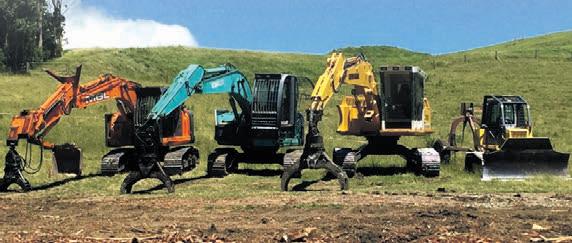

GoodWoodcabinsare customizable,soyoucancreatea spacethatisperfectforyou.








Terry Hobart comes from a family of Fordson lovers.
He was brought up on a Whakamarama dairy, sheep and beef farm and his father, Rob, bought a new 1962 Fordson Super Major.

˜ at particular machine is still in the family, with Terry’s brother Garth.



“I drove that tractor unsupervised from about the age of 12 and I loved the smell when it was started,” says Terry.
All rounder
Terry did an electrical apprenticeship, and had a varied working life. Well drilling, milk tanker driving, electrical foreman in an Australian nickel mine, and driving trucks.
“˜ e tractor collecting started in the 1980s. I had returned to New Zealand and bought 25 acres which I planted with lemons, and later on kiwifruit.


“I was driving for Taylor Brothers and it was long hours and good money.”
He has eight tractors that are mainly Fords or Fordsons. He was introduced to the Tauranga Vintage Machinery Club in the mid-2000s by its former founder, the late Eric Green.





As he approached retirement, Terry wanted a Fordson Super Major like the one he grew up with.

He bought one that was originally from a farm in Whitianga, which his brother in law Ray had owned and




it had been used to tow a boat for a few years.
“I bought it o° him in 2018. It had been sitting outside but was very tidy and just needed a paint.”
˜ e 1962 Fordson Super Major was identical to the one his father had. It would have been imported into New Zealand from the Ford factory in Dagenham, United Kingdom.
“˜ ey were general agricultural tractors and were considered big and powerful in their day. ˜ ey were quite modern.”






˜ e specs
˜ e Super Major has a four cylinder, 52 HP diesel engine with six forward and two reverse gears. It has a Simms injection pump mounted to the side of the engine. It boasted a di° lock and disc brakes.
˜ e Qualitrol hydraulic system that allows for both position control and draft control, and allowed it to compete with Ferguson tractors of the era.


Now retired and living in town, Terry has a quiet corner of his orchard, with a large shed full of tractors, a permanent caravan with a view and comes there for a night here and there with his wife to the peace of the countryside.
He’s also been known to hook up a mower to one of his tractors and do some mowing between the kiwifruit vines and the smell when the Super Major starts up still evokes childhood memories.

 Catherine Fry
Catherine Fry

Obvious, isn’t it? Equilise helps take care of horses by looking after the soil.

Technology is breaking into the fertiliser game, and is optimising crop growth for farmers across the Bay of Plenty.
Jordaan Contracting Ltd and Revive Soil Solutions NZ are joining forces to o˙ er the service, made possible using grid soil sampling to identify the nutrient variation in order to apply the right amount of fertiliser in speciÿ c areas.
Revive Soil Solutions NZ co-founder Dave Russell-Rockli˙ says the method is not only more precise than traditional spreading methods, but also more environmentally friendly.
or call 0 508 678 464 for more information
“By spreading the fertiliser only where it’s needed, we reduce the risk of nutrient runo˙ and help protect local waterways and ecosystems. In most cases this also reduces the amount of fertiliser required.”
Since making the switch to this new method, several maize ÿ elds JCL have been planting and harvesting for over a decade have seen “record yields,” despite the adverse weather in the last year, according to Dave.
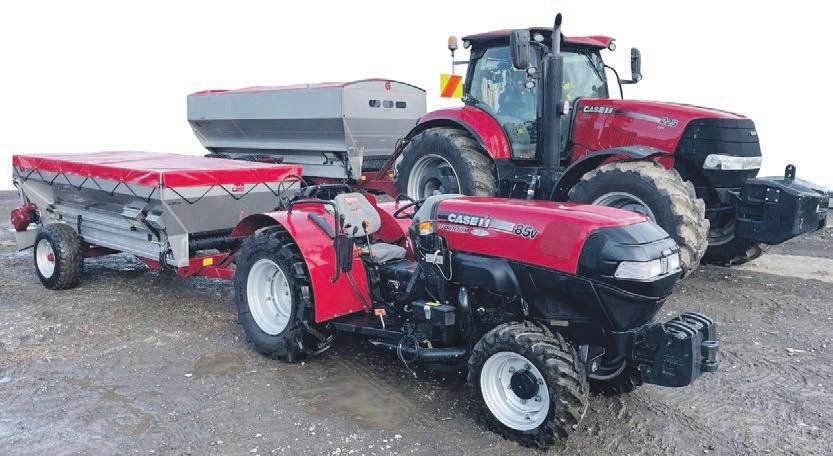
“° e grid soil sampling gives a detailed understanding of the soil and its nutrient requirements.
“Based on that analysis a targeted

recommendation is produced which is then loaded into the vehicle’s head unit. From there the rate is automatically adjusted based on the vehicle’s position in the ÿ eld.

“Waste is also eliminated as the spreader will stop as soon as it is outside the e˙ ective area and will also not spread in areas where the vehicle has already been.
“JCL has a 10 tonne spreader for maize blocks and dairy pastures and also the only variable rate orchard spreader in the area which has been used e˙ ectively for a number of Kiwifruit customers.” Dave recommends farms of all shapes and sizes to get amongst this new technology.



“We mainly focus on maize, dairy and kiwifruit. It’s something everyone can beneÿ t from, small or large. I really believe this is the future.”
For more information see their advert on this page.








 Taylor
Taylor

Ravensdown has launched HawkEye Response, a software tool to help farmers map and deal with slips that have impacted farm e˙ ective areas, compromised paddocks, or taken out fences.

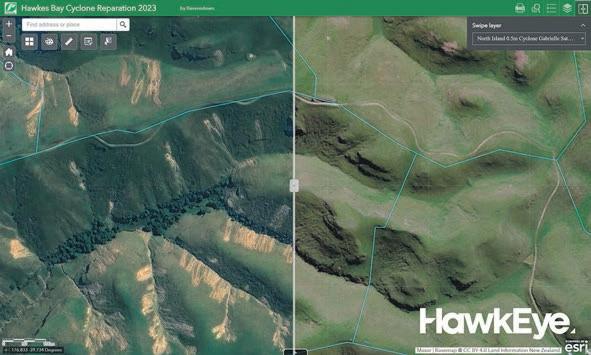
Users can also identify erosion-prone areas to prepare for future weather events.˜˜ ° e new tool combines pre and post Cyclone Gabrielle satellite data with ÿ xed wing aerial imagery and brings it into Ravensdown’s existing HawkEye software.
Once in HawkEye, the images of slips and washouts are crossreferenced against existing fence line data to give farmers an up-to-date spatial view of weather damage on their property.
Ravensdown chief executive o˝ cer Garry Diack says the tool will help farmers identify immediate hazards and other areas of concern so they can direct resources to those areas.

“Many farmers in Hawke’s Bay and East Coast still can’t easily access parts of their farm, so it can be incredibly di˝ cult for them to get a representative view of what needs to be ÿ xed ÿ rst.
“HawkEye Response enables farmers to get that full picture of their farm and prioritise remedial work according to the severity of damage and necessity for farm operations.”
Farmers can identify each paddock’s new e˙ ective area and
test new methods of farm and stock management virtually before committing to any changes.
° e software’s analysis and editing abilities can also help with the set-up of exclusion zones so that slips can be retargeted for re-seeding and erosionprone areas cordoned o˙ from future re-seeding or stock grazing.
Garry says the software is designed to be an enduring part of the farmer toolkit and will be enhanced and improved as it develops.
“° e aerial imagery gives farmers better ability to spot potential hazards for future weather events, such as badly placed culverts or infrastructure close to waterways.

“As the latest aerial mapping and satellite imagery comes through, HawkEye Response will be updated so farmers always have a close to realtime picture of their land from above and can respond to any issues.

“Data from the software can also provide information to help cyclonehit farmers with insurance claims.”





Fertiliser expenditure is usually the largest outgoing after mortgage payments, which are currently lifting to levels not seen for close on 30 years.
Fertiliser costs have already risen dramatically, particularly that of manufactured imported high analysis products.

With a drop in the cost of international shipping a signiÿ cant reduction can be expected, but historically prices have declined far more slowly than they have risen, says Ron Schepers in an article on the Functional Fertiliser website.









° is means that without cutting fertiliser inputs there will be, for some, serious pressure on farm proÿ tability, the di˛ erence between costs and income, this season, writes Ron.
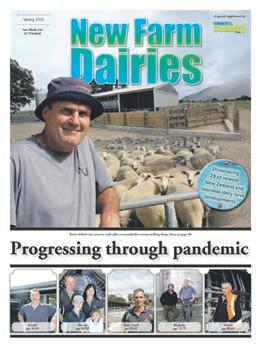




“° e question for many will be how little fertiliser can be applied this autumn without risking lower levels of pasture and crop production.
“It’s a question there’s no easy answer to because of the number of factors involved.˝Historic inputs which are re˙ ected in soil test ÿ gures are important.”
Ron says in situations where higher than maintenance inputs over many years have been the norm, not applying fertiliser this autumn is unlikely to signiÿ cantly reduce pasture growth over winter and early next spring unless there is a reliance on synthetic nitrogen.
° e other factor often disregarded is the physical structure of the soil.˝ With over 5000kgN/ha held in the top 25cm of most pastoral soils there’s no shortage of nitrogen. Its availability for plant uptake that’s the issue and the amount and depth of crumb will largely dictate the amount plants can utilise, says Ron.
“As a rule of thumb the areas of the farm that are softest produce the most feed.˝
“Compacted soils with poor root

penetration grow the least and are slowest to recover in autumn.”



° ere’s a low-cost long-term solution that all farmers, particularly where magnesium is an ongoing requirement, should consider.


Ron says Golden Bay dolomite has several unique qualities that make it worthy of serious consideration.
“It is a powerful soil conditioner improving pore space in heavy clay-based soils while adding a little stickiness to light sandy soils.
“Containing both magnesium and calcium carbonate an autumn application of typically 250kg/ha reduces the amount of lime that is required to maintain soil pH.



“Magnesium helps with uptake of phosphorus by plants reducing the likelihood of growth being limited by˝a lack of phosphorus between now and next summer.
“Beneÿ cial soil biology, earthworms along with microbes, respond positively to extra calcium and regular small inputs help with the digestion of dung, old root, and litter on and near the soil surface.”
He says Dolomite has been regarded as an expensive form of magnesium, primarily because of the cost of cartage from Golden Bay, however much of the magnesium oxide used as an alternative comes from China, considerably further than from Golden Bay.



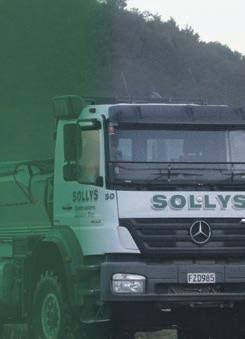
Dolomite need only be applied once a year, with autumn being ideal, to provide 12 month protection of animals from a magnesium deÿ ciency.




Message



° e message from long term dairy clients is that cows down behind hedges at 5 in the morning have quickly become a thing of the past, says Ron.

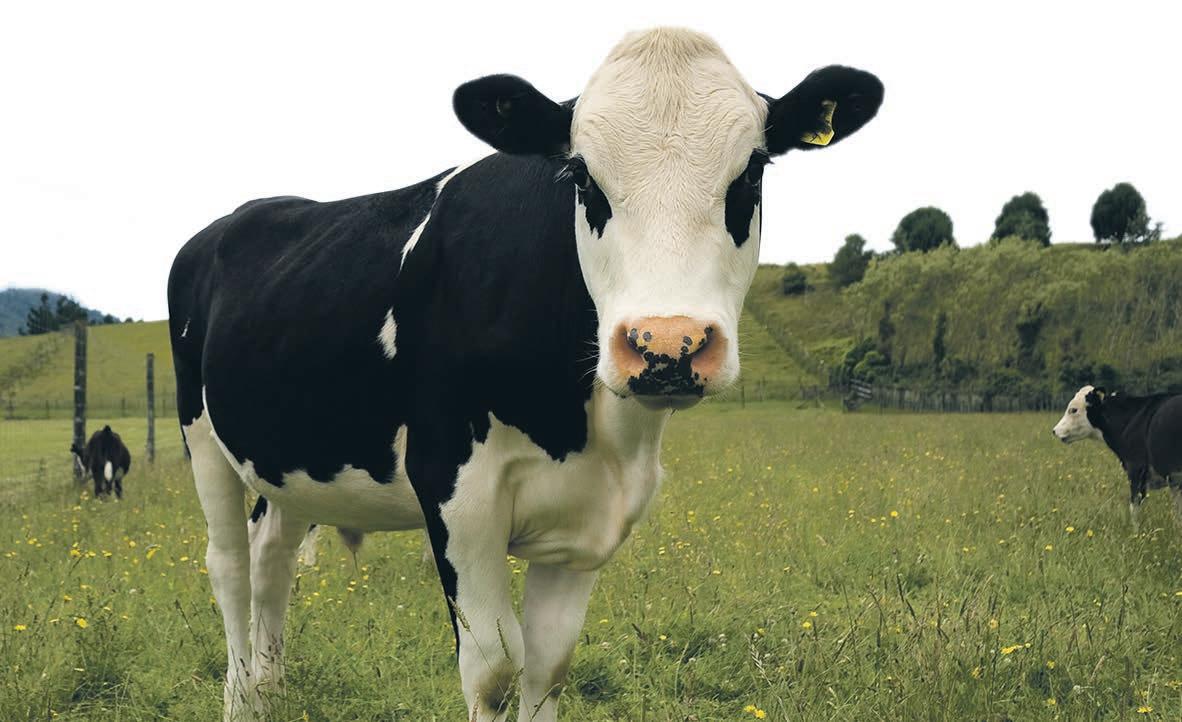
“° e requirement for dusting breaks on a daily basis is largely eliminated, as is the necessity to add large amounts of magnesium chloride or sulphate to drinking water.˝ Heavily dosed drinking water
is unpalatable increasing the likelihood of animals drinking from puddles, and production being limited by a lack of clean fresh drinking water. “Dolomite is a natural product originally laid down on the ˙ oor of the ocean over millions of years.˝With land movement it has become compacted and able to be mined in the same way as ag.lime.
“Because it is ÿ nely ground the improvement in overall animal health is rapid with ÿ rst time applicants noticing an improvement in pasture palatability within a month of application.”


˜ e aim of regenerative or biological farming is to maintain and improve soil health. Soil health is the beginning of human health.
Hopefully, the practices making farming and horticulture “neverending” and “self-sustaining” include most of the following. Maintaining/ increasing soil carbon, limited cultivation, keeping soil covered with crops, diversifying species or crops, including animals, and maintaining healthy root systems.
˜ is is what we at Kiwi Fertiliser are aiming at and is the reason for the company’s existence.



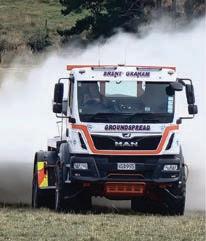


One of our mantras is, “feed the soil, let the soil feed the plants”. Many added fertilisers are plant feeders.


˜ at is cutting the animals out of the equation. A plethora of underground organisms can far outweigh the aboveground animals, but are neglected and in many cases destroyed to the detriment of all players



including the plants. Photosynthesis is the most important process on our planet. But if the nutrition is not supplied to all the organisms in the soil, the photosynthesis can be severely reduced by as much as 3-4 times.
If photosynthesis is increased, so will the plants size, yield and health. ˜ at will transfer to the farmed animals.
If all the minerals are supplied to the plants and animals in the soil, bacteria, fungi, protozoa, worms, and many others will solubilise those minerals for uptake by the plants. Plants respond by manufacturing liquid carbon in the leaves, which is returned to the soil to feed the micro-organisms that inhabit the rhizosphere. ˜ e photosynthetic e° ciency can vary the rate of carbon transfer to the soil from ÿ ve per cent to 95 per cent.
˜ at’s a huge range of productivity. When this happens at a higher level, the system changes from the soil driving healthy plants, to plants driving healthy soil. How e˝ ective this is, depends on the physical structure, chemistry, and biological makeup of the soil.

Farming practices can be very destructive if there is over-stocking, too much cultivation, poor soil structure, or too much chemical is applied as poor fertiliser choices or chemical sprays. If all is going well, the plants will not su˝ er much disease or pest pressure at all. ˜ e “secret” is to know what needs to be applied and in which order to bring the soil to its optimum condition where highly diverse species are maintained below and above ground. Nitrogen and carbon are diametrically opposed. If N is overapplied to the soil, it can create a microbial feeding frenzy. If carbon
is not applied to help balance the N, those microbes will mine the C from the organic matter to the extent that the OM will be decrease over time (as happens with cropping and on dairy farms over-using N).
˜ e utterances such as “N is N, P is P, K is K, the plant can’t tell the di˝ erence, use the cheapest one,” are simply not true. Plants can’t get up and go elsewhere. But they can tell the di˝ erence and do so by emitting distress signals that attract insects to attack them. ˜ is mindset has led to deÿ ciencies of trace and secondary nutrients and excesses of major nutrients.






At Kiwi Fertiliser we have found the soil organic matter, therefore carbon is increasing on farms and orchards that we service. ˜ is opens another opportunity for farmers and growers to participate in creating an income stream from carbon sales on the voluntary international market. We can help you achieve that too.




Mongolian herders Ama, Budee, Khanda and Baaska with Share Mongolia representative Mark Barrowcli˜ e (centre back row) and Paul Brough (second from right).
After three months working in shearing gangs across New Zealand, four Mongolian sheep herders will soon return to their homeland with new knowledge and skills that have the potential to change their lives and reshape the shearing scene in their native country.
˜ e four Mongolians herders – Budee, Baaska, Ama and Khanda – arrived in New Zealand earlyJanuary having done all their previous shearing using scissors, a time-consuming practice which limits the number of sheep that can be shorn in a day to about 30.


With their trip wrapping up shortly, each of the herders is now shearing competently using an electronic handpiece and all four have achieved shearing personal bests of more than 250 sheep in a day – a feat which has previously only been achieved by one other Mongolian.
˜ e visit to New Zealand was undertaken as part of the Share Mongolia programme – an






initiative to introduce modern shearing techniques and equipment into Mongolia that took ° ight following a chance encounter between Rabobank agribusiness manager Paul Brough and local Mongolian farmers in 2019.




“While I was trekking through Mongolia in 2019, I came across a group of farmers who were shearing a herd of about 900 using scissors and they told me it would take them about a month to complete the job,” says Paul.

“˜ is really blew my mind given how much quicker this can be done with electronic equipment. I had a few discussions with some work colleagues and clients, and we looked into running some training that would help develop Mongolian shearers’ skills with modern equipment.”
Paul says the Share Mongolia programme will continue to support Mongolian herders and a number of further activities were planned for the coming months.



“˜ e goal is to train and equip another 120 herders to shear using electric machines.”





Rotorua’s Bruce Calkin had been feeling optimistic. He had just ÿ nished seven rounds of chemotherapy for throat cancer and was awaiting the news of his results. He never dreamed he would also receive the news from New Zealand National Fieldays Society chief executive Peter Nation that he was the winner of a brand-new Isuzu D-Max.
“You’re bloody kidding me… I can’t believe it,”
says Bruce after realising he wasn’t being scammed.

° e prize, a white Isuzu D-Max LX Double Cab Auto 4WD, is valued at $61,990 and also includes all on-road costs.


“I thought he was having me on,” says Bruce.
“It started to sink in when he said that I’d attended Fieldays and scanned my Smart Band to enter the draw to win a Ute and that I had won it”.



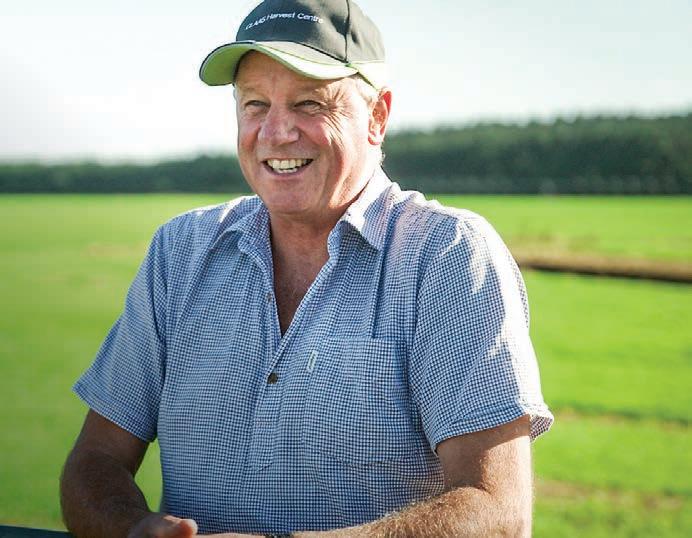




“It couldn’t have gone to a more deserving winner,” said Peter.
Bruce, who works for electricity and ÿ bre solutions company Unison, attended Fieldays with wife Julie on Saturday, December 3, last year.
° e four-day event, which has been running for 54 years, moved to the summer dates to play catch-up after Covid.



“We usually attend Fieldays every year, but Covid put a stop to that for a bit. It’s been a pain in my backside really,” says Bruce.

“When I was diagnosed with cancer, I had to undergo a pretreatment and have a tonsillectomy, then Julie got covid, then I got covid. So, it all got delayed. I didn’t end up starting treatment until September.”
When they heard Fieldays had moved to the summer dates, the Calkin’s thought it would be a good opportunity to attend again and have a day out.


“We brought a truckload of beef jerky, some wine and spent time looking at the range of outdoor ÿ res,” says Bruce.

“It was good to be back, it’s always such a great event.”
Collecting a Fieldays Smart Band at the gate, he registered his details and scanned it on the Isuzu site and dropped it into the back of the Ute at the end of the day.
“Never in a million years did I think I would win it. I have only ever won $100 at Lotto, seems my luck might be changing!” says Bruce.
Containing innovative RFID technology, the Fieldays Smart Band allowed visitors to connect their details and scan their band to request relevant information from Fieldays exhibitors, enter competitions and claim giveaways.

Handing over the keys to the Ute was Isuzu Utes New Zealand general manager Scott Kelsey.
“° e ÿ rst place I’ll be driving it is around town for everyone to see, stopping in to show it o˛ to family and friends,” says Bruce.
“° en we will head to the Redwoods with the bikes on the back. ° e last year has been pretty brutal, but you know it could be worse and at least I can still get out on the trails.”
Bruce and his wife Julie are both keen mountain bikers and the new Isuzu will be ideal for transporting their mountain bikes to and from the world-famous trails of the Whakarewarewa Forest.
While the latest generation Isuzu D-Max has been on the market for two years now, it remains one of the newest utes on the market.



A Sustainability Hub is one of the fresh new features set to capture attention when Fieldays returns to its winter dates at Mystery Creek in June.
Fieldays remains the Southern Hemisphere’s largest agricultural event and the ultimate launch platform for cutting-edge technology and innovation.
“Sustainability is a strong focus for the Society, and it’s fantastic to be collaborating with the Environmental Protection Authority on the Fieldays Sustainability Hub under the theme of ‘˜ e Time to Act is Now’,” says New Zealand National Fieldays Society chief executive Peter Nation.
“We’ve made a strategic decision to use the scale of Fieldays to help educate both visitors and exhibitors so that future generations will beneÿ t from improved sustainability practices for New Zealand’s food and ÿ bre sector.”
only are that, but those who purchase our goods – from multi-national companies to individual consumers – increasingly demanding evidence that they’ve been sustainably produced.
“We want to support farmers, growers, and the consumer on their sustainability journey. By showcasing some of the initiatives underway in Aotearoa New Zealand, we can help everyone see that together we can overcome the enormity of the challenges, with innovation and collaboration.”
Alongside the hub, the Fieldays Sustainability Trail, accessed via the o˝ cial Fieldays App, will lead visitors to other Fieldays exhibitors who are demonstrating sustainability practices, products, and initiatives.
FORKLIFTS
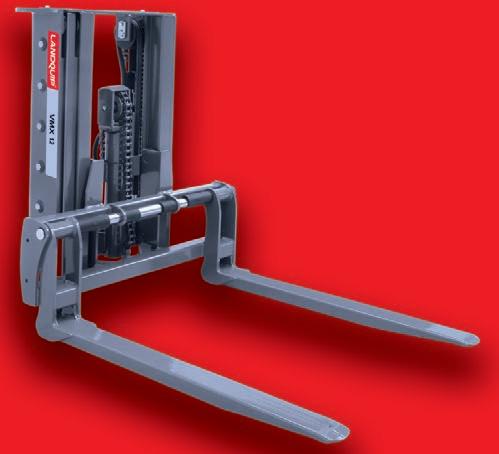

Our Orchard, Vineyard, and Topping mowers are designed to be both simple and heavy-duty.



We offer a range of options, including front and rear rollers, side or rear discharge, wheel kits, and chain guards, to help you customize your mower to meet your specific needs.




Fieldays will have a sustainable focus this year.




˜ e new hub will feature a select number of sustainability-focused organisations, including Toit˛ Envirocare, Wilderlab and RiverWatch.

EPA engagement general manager Paula Knaap says visitors will be able to explore sustainable farming research and science, urban and rural waste management, as well as water management and renewable energy.
“Embracing initiatives that protect and enhance the environment has a range of beneÿ ts, from longevity of land use through to resilience to changing climate conditions,” says Paula. “Not
˜ e Fieldays Sustainability Hub joins the Fieldays Innovation Hub, Fieldays Opportunity Grows Here Careers Hub, Fieldays Hauora Taiwhenua Health & Wellbeing Hub, Fieldays Forestry Hub and Fieldays Digital Futures, the latter two were launched in 2022, as key focus areas for visitors to explore during Fieldays.
˜ e new Fieldays Sustainability Hub will be located on site E38, on the corner of M Road and E Street, next to the Village Green. Fieldays commitment to sustainability includes building the internationally recognised ISO 20121 Sustainable Events Standards into its management procedures.
Full details regarding the Fieldays Sustainability Hub are available at www.ÿ eldays.co.nz



















Sweep and mulch your orchard/vineyard pruning’s in a single pass! Our pruning sweepers are designed for efficient and effective maintenance of kiwifruit/apple orchards and vineyards. We offer both double and single row options, and you can choose between heavy-duty rubber flaps or nylon brush heads to suit your specific needs.

Our frontmounted forklifts are versatile and can be attached to any tractor model or make. They come in 2 or 3 stage options, with weight capacities of 1200kg, 1500kg, or 600kg, and range from lift height of 1.1m up to 4.1m.















The Clean reen Effluentystem utilises as little as two 30,000 litre water tanks to provide storage for greenwash and effluent dispersed The adantage of the water tanks is they are guaranteed not to leak and have no rainwater catchment, says a spokesperson for the company.


“Rainwater catchment in mega ponds equates to doubling the amount of effluent bein stored and having to be dispersed


The Clean reen Effluen System came to fruition initially on a farm at Gorge Road in Southland.
From that first pototype, the system has successfully been employed on dairy farms globally for 16 years.
During the process of developing an ultra-low distribution system, the concept of environmentally-friendly dairy effluent management wa born, says a spokesperson from Clean Green Effluen

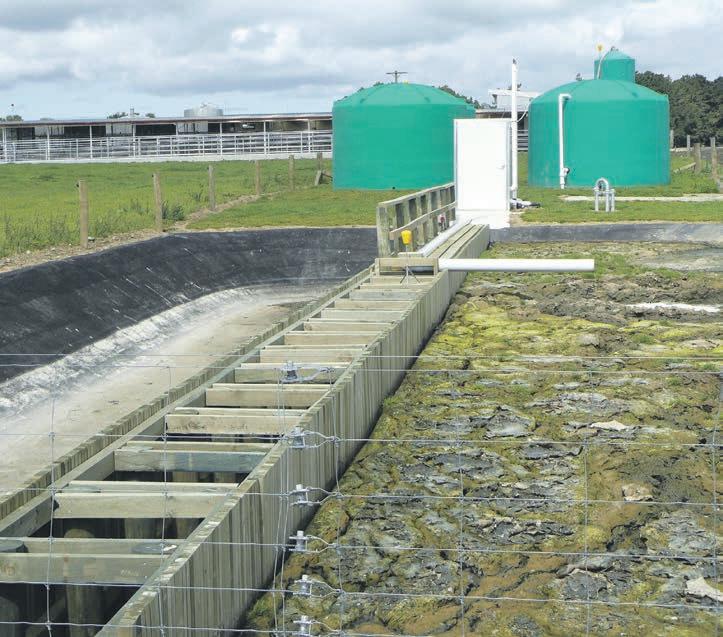

“This lw depth low rate application system is based on applying farm dairy effluen at levels that fall well below pasture uptake.

“The system stats with a unique patented weeping wall encased in a concrete lined bunker. The eeping wall removes the solids and allows the liquid to flw into a pump chamber. Green water is then pumped to a tank for recycling.”

Clean Green Effluent say external yarding can then be automatically cleaned with greenwater via floodwash or backing gate nozzles, effectiely cleaning yards without the use of fresh water.


This educes the water take from the standard 50 to 70lt/ cow to 20 to 25lt/cow.
“The Clean reen Effluen System’s patented automated distribution system allows liquid to be dispersed over large



areas at a super low rate ¼ mm application depth, and effluen can be safely dispersed nearly every day of the year meaning there is no nitrogen leaching and the pasture retains all nutrients provided, thus increasing pasture growth by up to 35 per cent.

“Recent independent scientific tests have indicated that with this system negligible levels of nitrate leaching can be achieved even in the winter; better than most other systems can achieve during the summer months.” Due to the ¼ mm application depth and being able to distribute all year round, Clean Green Effluent says no meg ponds need to be constructed and therefore minimal storage is now required.

by pump to land.
“Storing effluent in tank and applying fresh at low rate, eliminates the emissions dissipated from storage ponds.





“Given the current amount of focus on New Zealand’s dairy industry needing to reduce emissions, the Clean Green Effluentystem is the obvious option for farmers and industry to adopt, to ensure our dairy industry continues to thrive.”



Today the sights and smells of Fieldays still make me feel like I’m on holiday. But now I don’t tag along behind mum and dad.
I remember every year dad would stop just inside the gate and meet the same guy.
O˝ him he’d buy the same fuel siphoners with a valve inside that made them so much easier to use (than the old suck and spit trick).
















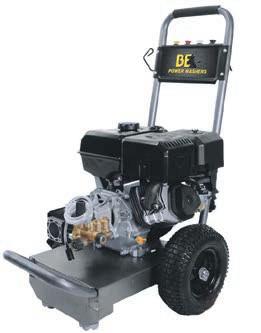


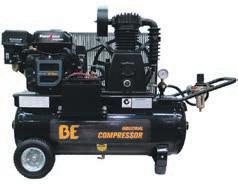
gone by 5am to bustle onto the motorway and join the snake of tra° c heading towards Hamilton.



















Yes, our annual family holiday was going to Fieldays. Excitement would build as we reconnected our sights with Hamilton City after a 12-month hiatus and Dad nervously navigated the tra° c to Mystery Creek for us to park up and walk for what felt like forever to get there. ˜ is was before today’s handy park ‘n’ ride buses. Waikato’s winter chills would engulf us – luckily we were donned in skivvies, swannies and gumboots as we felt the temperature change for the winterless Far North.
For a youngster used to a quiet farm life the thousands of people, pop-up tents, helicopters buzzing overhead, loud speakers blaring, roaring tractor pulls near the front gate and aroma of meat sizzling on barbecues near and far was exhilarating.
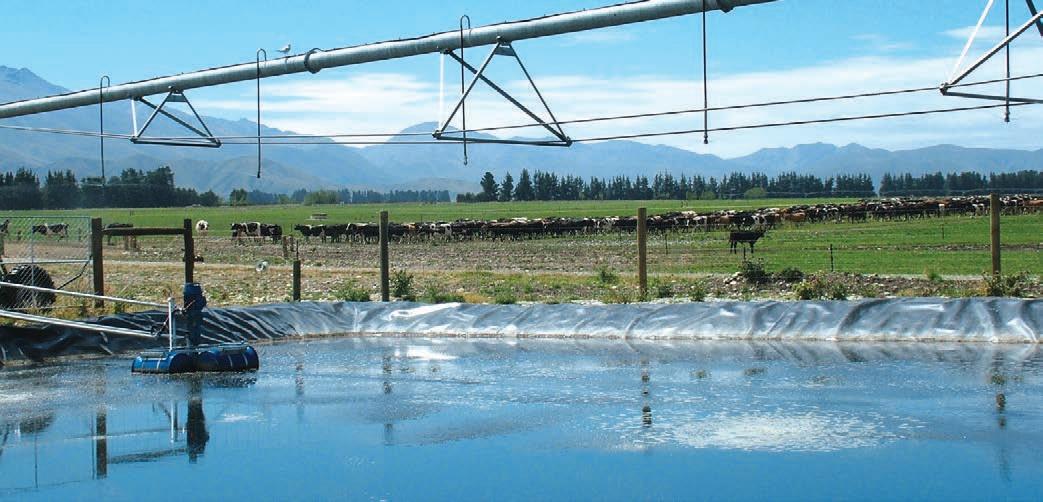

Mum and I loved all the sites with animals – from alpacas to goats, to calves of di˝ ering beef breeds. Giving them all a big pat I’d gain a sticker of the breed for my enthusiasm. I even remember one year viewing this magniÿ cent great bull on one side of a tent then buying a steak burger of his breed on the other. ˜ is and the menagerie of animals have all but gone.
We always visited the Fonterra tent – we were suppliers – for a cup of tea, and some free goodies. And for dad’s annual opportunity to tell them how they should be running things.
We always got our hands on some of those super handy Pel sticks to walk around the Fieldays with, then take home to prod and guide the cows.
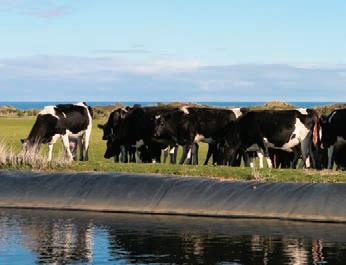
As I grew older I twisted dad’s arm into letting me head o˝ to the wearable art fashion shows and cooking tents – as he liked to keep things simple. His musts were a visit to Fonterra, and the Stihl tent. Fieldays has changed with the times. I do enjoy today’s much larger o˝ ering of agricultural, horticultural, lifestyle, innovation and technological tents, products, people and ideas on o˝ er. And I also like being able to forge my own path around Mystery Creek – and visit new things every year.

As early as I can remember, every June we’d leave our little dairy farm in Far North and drive the
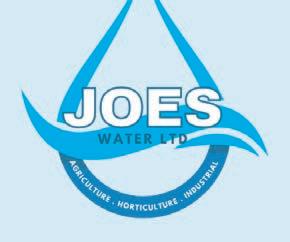

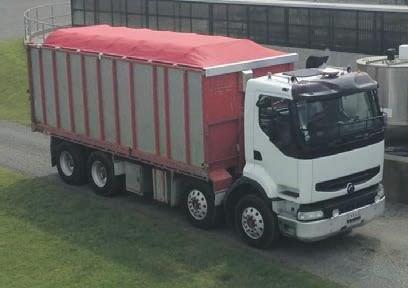
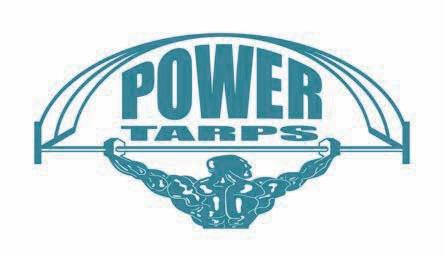


We specialise in high quality, mesh and PVC covers to suit trucks, trailers and farm bunkers. All of our covers can be easily operated from the ground using a silky smooth cable system, eliminating health and safety risks.


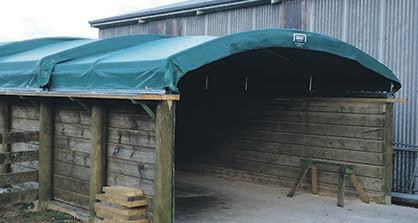
Research and product development are long-term investments and Fieldays has been the platform for launching innovations in New Zealand for more than 54 years.˜˜ While most economists predict a downturn this year, if history repeats itself, the silver lining is that innovation thrives as a solution to challenging environments.
With entries now open for Fieldays June 14-17 2023 and a total prize package of cash, services and product worth more than $60,000, Fieldays programme manager Steve Chappell says they predict a high calibre of entries this year.
“We expect to see development in all areas, especially Agritech, autonomous systems, software developments, robotics in manufacturing, and solving worker shortages,” says Steve.
“Innovation in these areas usually re° ects the climate we are in, and often we see companies needing to think smarter and be more e˛ cient when times are harder. Data collection and measuring tools, management apps, and a big focus on environmental reporting are also topical currently.”
˝ e Fieldays Innovation Awards is a globally renowned award programme and innovation in the agricultural and primary industries provides a stable growth market with plenty of opportunity.˜ Fieldays Innovation awards represent the innovation lifecycle in three categories: Prototype, Early-Stage, and Growth & Scale.
Special recognition is also given to younger innovators, with an award for the Fieldays Young Innovator of the year award.˜
“˝ e short turnaround since Fieldays 2022 means this year’s entries will really be hot of the press. We expect entries from all around the world in the food and ÿ bre sector.”
˝ e Fieldays Innovation Awards are an opportunity to showcase an idea or innovation, receive feedback from Fieldays visitors, and connect

with potential partners, distributors, investors and the New Zealand innovation eco-system.

Entries are encouraged from across the Primary Sector, which refers to: Dairy, Meat & Wool, Forestry, Horticulture - including Viticulture, Seafood - including Aquaculture and Fishing, Arable, and Agri Tech - including Food Tech and Green Tech.
Building on a similar format from 2022, the following criteria have been altered:˜˝ e Young Innovator Award is now for entrants 19 years and under.
Fieldays wants to showcase the amazing innovations coming from school-age entrants.
“So many great ideas are coming through that deserve acknowledgement, and we expect a lot of competition,” says Steve.
˝ e Growth & Scale category is now for innovations commercialised in the last four years and for sale in at least two countries, one of which must be New Zealand.
Entrants can now add additional information to their entry once it is accepted into the awards to ensure the judges have the most up-to-date information.
A new rotation system will be introduced to the awards judging panel, with new judges joining the existing broad range of experts from across the innovation ecosystem.˜

“˝ ese changes will continue to ensure the Fieldays Innovation Hub will again be buzzing as the centre of the Innovation eco-system at Fieldays,” says Steve.˜˜
Entrants can also display their innovations around Fieldays on their sites, as part of the Fieldays Innovation Trail on the Fieldays App.˜
Entries are open until 1pm ˝ ursday, May 4. Full details of the awards, including the T&Cs, FAQs, and Category Criteria, can be viewed on the Fieldays website at: www.ÿ eldays.co.nz/innovation.
Te Aroha has a long history of Chinese immigrants stretching back to the goldÿ eld days. In 1885, Ah Yang was the ÿ rst Chinese market gardener to settle there.

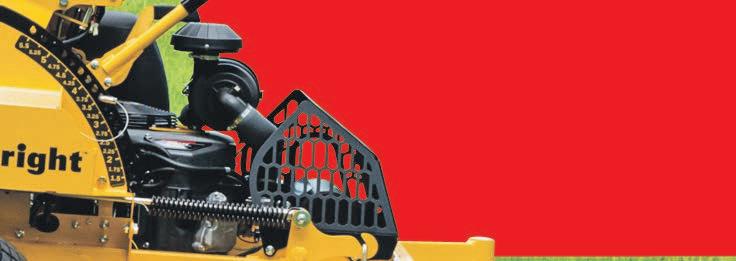


He had a four acre garden on George Lipsey’s land just north of the Railway Station and supplied vegetables to the town for several years.




From the early-1900s, several Chinese had vegetable or laundry businesses in Te Aroha including Wong Ting, Chew Hay and Yee Wah.






Also, Percy Wong Too had a fruit and vegetable shop in Whitaker Street from 1930 to 1948, and six of his children were born there.
Wong Foo arrived in the early-1920s from Xinhui village, Canton in south east China.

He developed a 25 acre market garden at Wyborn Road, Mangaiti, employing several workers. He did not have a shop, but delivered fruit and vegetables to Te Aroha and surrounding district in his well-known Model T Ford truck.


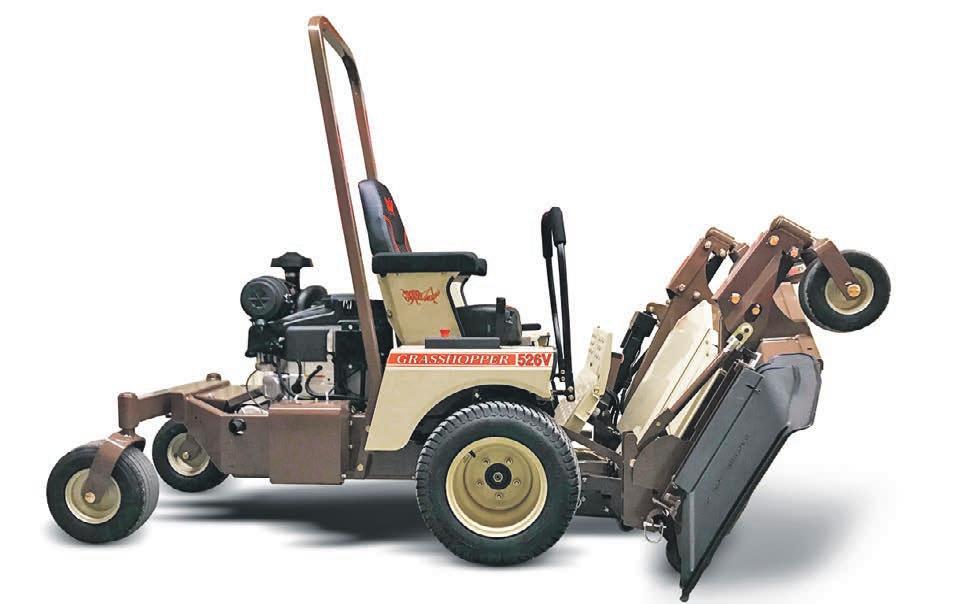
He drove so slowly that young boys could catch him up on their bikes and get a free tow and, sometimes, even a free apple! He did not mind, as he loved children and sometimes gave them sweets.
He worked his market garden for 23 years, bringing his wife Wong Lou King out
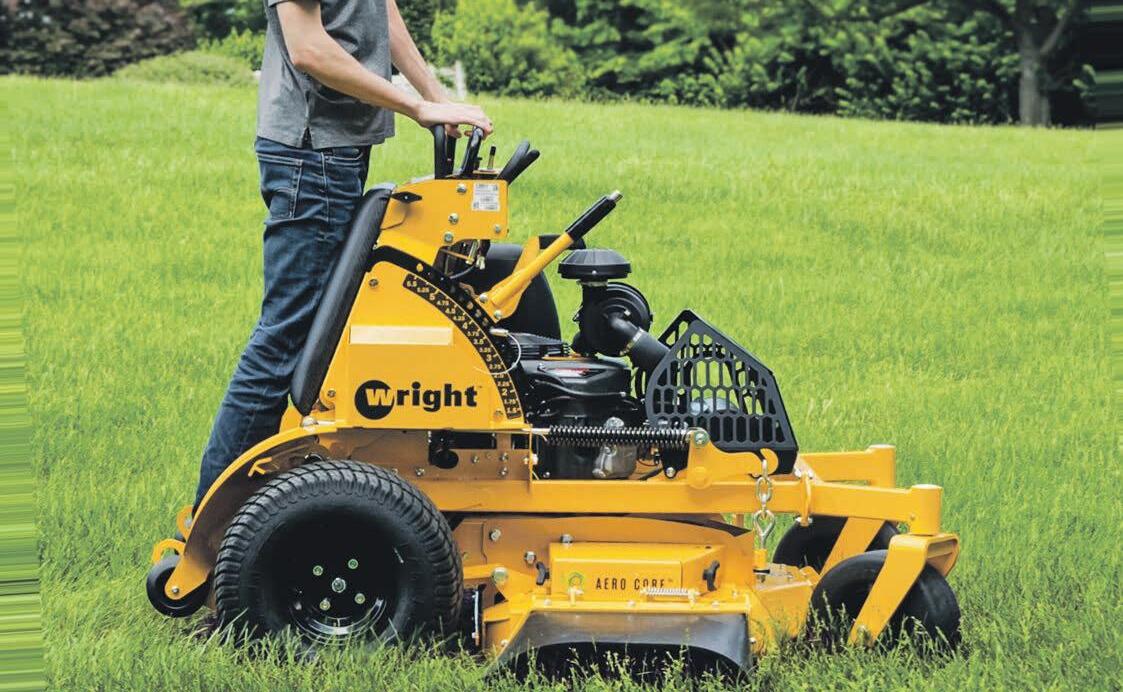

from China and raising a family here. Wong Foo, his wife Lou King and their son Wong Doo Hing are buried in the Te Aroha Cemetery.
More recently, hard-working K W ‘Mick’ Joe had a fruit and vegetable shop in Te Aroha for 37 years (1960-1997) – longer than any others. He won several awards for the quality of his shop displays.

Early Chinese immigrants bore the brunt of government-sponsored racial prejudice. ˜ ey had to pay a hugely expensive “Poll Tax” to come here and then pay it again to bring their wives.
˜ ey also had to carry an “alien registration card” and inform the police every time they shifted to a new locality.



In 2002, the New Zealand Government issued a formal apology to the Chinese community for their historic maltreatment.




Te Aroha farmer Stan Wyborn, who did not have any children, kept a fatherly eye on Wong Foo’s son Wong Wah. Stan o˜ ered Wong Wah an apprenticeship in his electrical business and he later sold his business to Wong Wah.






In 1963, Stan Wyborn also helped Wong Wah get permission to bring his ÿ ancé out from Hong Kong.
Wong Wah had been corresponding with a girl named Diane in Hong Kong, but he could not a˜ ord the trip so had never met her.
When Stan and Muriel Wyborn passed through Hong Kong on holiday, they o˜ ered
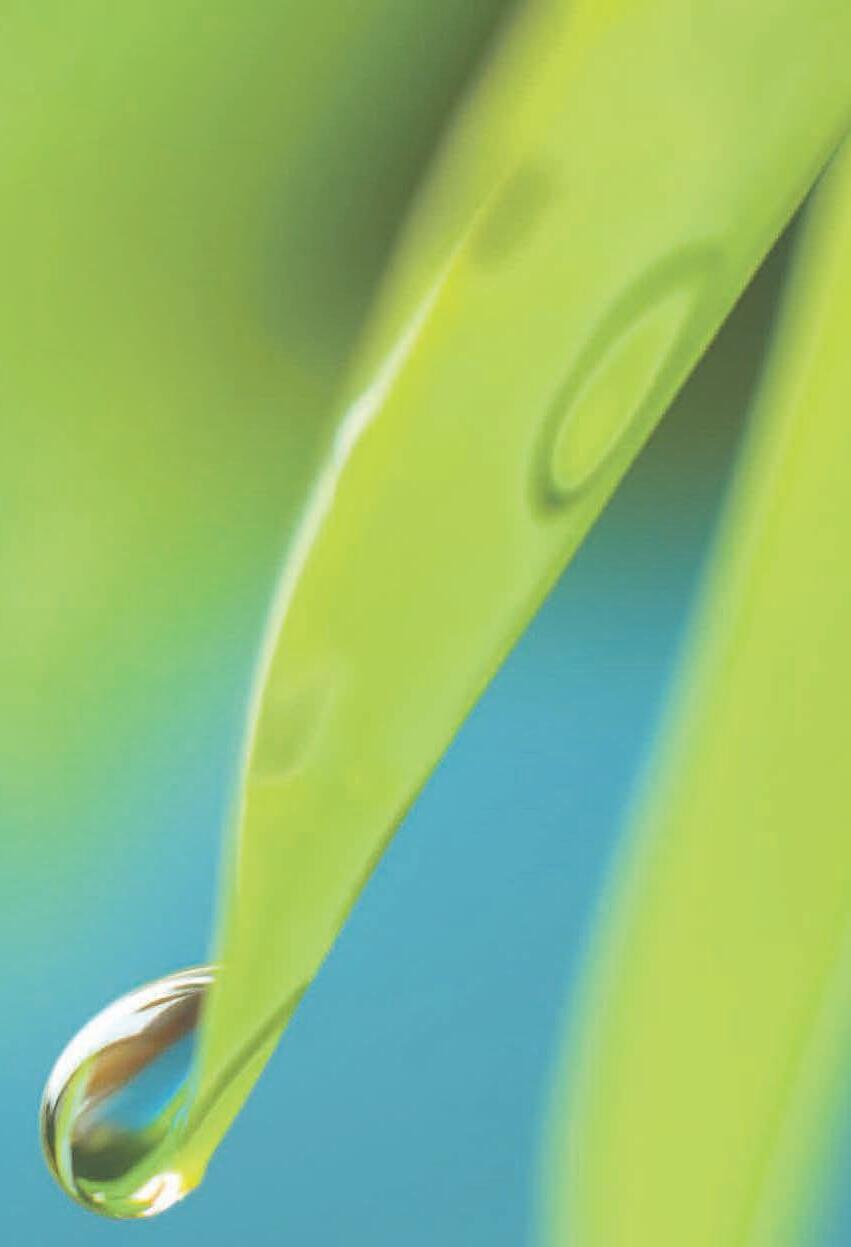


to meet Diane and “check her out” to see if she was suitable!
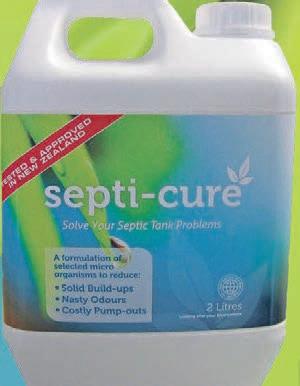




After taking her out for dinner at a Hong Kong restaurant they were impressed and advised Wong Wah to deÿ nitely marry her!
When Wong Wah applied to the Immigration Dept for a permit to bring Diane to New Zealand, they simply ignored him. After applying many times over a year without receiving any response, Wong Wah discussed the problem with Stan Wyborn, who immediately “pulled strings” with the local MP.
Very soon a letter arrived from the Immigration Dept granting Diane’s entry permit.
But the Immigration Department showed further prejudice and discrimination. If Wong Wah and Diane did not get married within 14 days of Diane’s arrival in New Zealand, her entry permit would lapse! Furthermore Wong Wah (who had very little money) had to prove that he owned a house freehold! It was a mad rush for Wong Wah to obtain a loan, buy a house, and make all the arrangements for the wedding in only 14 days. But with the help of many local well-wishers he somehow managed it! ˛ ey were married in the Te Aroha Catholic Church in 1963.

You can ÿ nd out more by visiting a special display on our early Chinese settlers in the Te Aroha Museum.
Te Aroha & District Museum Society Inc, Te Aroha Domain, 102 Whitaker Street, Te Aroha. Email: tearohamuseum@xtra.co.nz Web: www.tearoha-museum.com





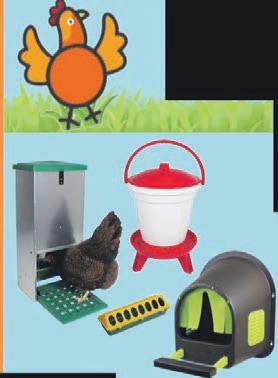



























Nestled into a picturesque hillside in the Taup˜ suburb of Kinloch, Wayne and Anna Kirk’s unique and stylish home has been designed as a welcoming, relaxing retreat.
Taking in magniÿ cent views of Lake Taup˜, the 302m2 home was built as a holiday home for the Hawke’s Bay couple who enjoy the peaceful, relaxed pace the lakeside township has to o˛ er.
“We both work long hours in demanding roles, so being able to take time out for rest and
recuperation is vital,” says Wayne. Making a bold statement in style, the architecturally designed home impresses from every angle, with eye-catching vertical cedar and black Linea weatherboards. But it’s not only the Kirks who are impressed with their new build.

˝ e home cleaned up at the 2021 Registered Master Builders House of the Year awards taking Gold Reserve status with a TOP 100 Award as well as Regional Category Winner, Regional Gold Award, and Regional Kitchen Excellence.

And it’s easy to see why.
Wayne and Anna both
agree that working with Landmark Homes Taup˜ on their dream holiday home has been a positive and rewarding experience.

“I can’t speak highly enough of the Landmark Homes team,” says Wayne.
“˝ e team are all very experienced, professional, and passionate about delivering exceptional results.






















“˝ ey helped us take a concept that was quite generic and average and turn it into something that was unique and personalised. ˝ ey tapped into what we were really looking for and made that happen.”

Farmer conÿ dence in general economic conditions has hit a record low, according to a Federated Farmers January survey.
Of just over 1100 responses from farm businesses around the country, a net 65.2 per cent considered current economic conditions to be bad.
˝ at’s 17.4 points worse than the survey in July last year and the lowest level of conÿ dence expressed in the 27 biannual Farm Conÿ dence surveys Feds has conducted since 2009.
A net 81.8 per cent of farmer respondents expected economic conditions to deteriorate over the











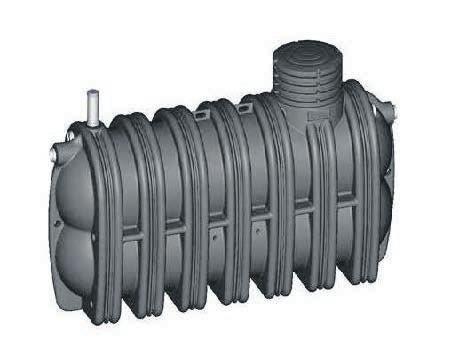
next 12 months, 0.9 points down on the survey six months ago.
“It’s not just in˙ ation and rising farm input costs,” says Federated Farmers president Andrew Hoggard. Looking ahead, 5.4 per cent of respondents expect their production to decline over the year
$82.95 for 2 bottles post-free or 1 bottle $43.95 plus $5.99 postage Each bottle has 120 capsules, approx 2 months’ supply per bottle.
What starts with a brieÿ ng on the evening of March 20, 2024, in Blenheim promises to be a sevenday tour that will not be forgotten.

On March 21, the NZ Adventures tour leaves Blenheim and travels through two high country properties before exiting onto the Awetere Valley Rd “which we then drive up and takes us to Molesworth for the afternoon drive”.

“Our overnight will be in Hanmer Springs. Day two takes us through the Hurinui before crossing the Brothers Range, through McDonald Downs station for views from the Coast to the Alps,” says a spokesperson for the adventure company.
“Day three begins with a road trip to beautiful Lake Heron where we will stop for morning tea before driving several of the
farm tracks on Lake Heron station enjoying a delicious station lunch at the Station Homestead. From here we will travel to Geraldine for an earlier ÿ nish than normal.
“On day four, we will set o° from Geraldine and get straight into our route up the Orari River Gorge in the morning. ˛ e afternoon will take in the Macaulay River Valley at the head of Lake Tekapo, if the river conditions are suitable.

“Otherwise the trip will include the Mackenzie Pass and a high country sheep station near Lake Tekapo village and the day will ÿ nish in Twizel.”

Day ÿ ve will take people into the dry Mackenzie high country into remote Black Forest Station back tracks.
“A picnic lunch in a scenic setting before skirting the Kirkleston Mountains on Te Akatarewa station, to the east of Lake
Benmore before descending to cross the dam to Omarama.”
On day six, the tour will cross directly from the Mackenzie to Central Otago over the Omarama saddle through Twinburn and Michael Peak stations, before descending to Cromwell for the night.
“Day seven, we head up and onto the Carrick Track where we enjoy spectacular views and imagine life in the mining days with remains of houses, a stamper battery and the water races which still run today.
“A picnic lunch is had on the lakeshore of Lake Dunstan. A run up the Cardona Valley leads us to Waiorau station for the zig-zag climb up the old Miners trail and on to Mt. Pisa.
“Our ÿ nal night is spent at the Historic Cardrona Hotel. ˛ is tour ÿ nishes just before the Easter Weekend.”

Science bu° s will know that Magnesium and Calcium are in the same column in the Periodic Table.
It is unsurprising then that these two essential minerals control nerve and muscle function. In muscles, Calcium dominates Magnesium when muscles contract. Magnesium should then dominate Calcium in the relaxation stage. If Magnesium is low, then Calcium dominates both stages.
What this really means is that inadequate Magnesium is a recipe for





What is Magnesium Triple?
This is a blend of 3 highly bioavailable forms of Magnesium for rapid absorption and better results.
•Marine Magnesium 121 mg

•Magnesium Glycinate 240 mg

•Magnesium Citrate 258 mg

How can Magnesium Triple help?

•These high grade forms of Magnesium are quickly absorbed to get rapid benefits
•It is ideal to help relax sore or tight muscles

•Can help with restful sleep

•To help with PMS related tension
•Helps muscles recover after exercise
•Supports healthy heart rhythm
John Arts comments:
“Abundant Health rapid absorption Magnesium Triple can really help tight or stressed muscles and for a good night’s sleep. The 3 different forms of Magnesium mean you get fast results. The normal dose is 2 before bed.” (John Arts, Founder, Abundant Health Ltd)
TO ORDER PHONE 0800 423 559


cramping, sti° , sore and tired muscles.
A tell-tale sign of low Magnesium are muscle cramps, especially at night. We need to be aware that dehydration, low salt intake and some drugs, notably stains, can a° ect muscles. While muscle cramps are uncomfortable, it is the e° ects of low Magnesium on heart (cardiac) muscle that are frightening as it can a° ect electrical impulses and blood ˝ ow in the heart.

˛ e best way to think about Magnesium it its e° ects on ‘tubes’ in the body, especially blood vessels. Our muscles contain tiny blood vessels that bring oxygen and nutrients to our muscles. With su˙ cient Magnesium our blood vessels should open (dilate) after contraction. Low Magnesium does the opposite whereby blood vessels narrow and can then spasm. In our skeletal muscles this can bring muscle tightness and cramp. In smooth muscle that lines our blood vessels this can cause blood˝ ow restriction and can lead to hypertension. It is not just blood vessels that are a° ected; it is our heart muscle, eyes, lungs, gastrointestinal tract and in women, their reproductive tracts. ˛ is is why Magnesium is so helpful for PMS.
For people without symptoms, I recommend my multi-mineral/vitamin/antioxidant complex as it includes Magnesium. If you are symptomatic, I recommend adding my Triple formula Magnesium that combines Marine Magnesium, Magnesium Citrate and Magnesium Glycinate.
John Arts (B.Soc.Sci, Dip Tch, Adv.Dip.Nut.Med) is a nutritional medicine practitioner and founder of Abundant Health Ltd. For questions or advice contact John on 0800 423559 or email john@abundant.co.nz Join his newsletter at www.abundant.co.nz

developed in response to a dilemma experienced by many kiwifruit orchards transitioning canopy systems, originally designed for green kiwifruit, to gold,” says LBC Rural Contracting’s Craig Hancock.


“The diffence in weight between the two varieties is significant. or example, green kiwifruit typically produce around 12,000 trays per hectare while gold
LBC Rural Contracting’s byline – that there is magic in what they do – is borne out by the innovation the business is delivering to kiwifruit growers, farmers and horticulturalists across the Bay of Plenty and Waikato.


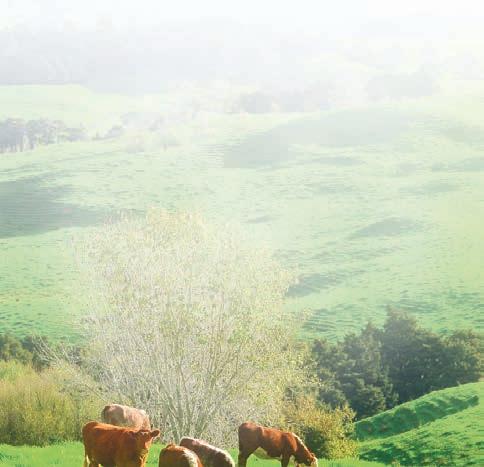




The company built a eputation for strong functional post and rail, post and batten and electric fencing along with cattle yards and equine facilities – but it is their unique scaffolding system and seed drill which are drawing accolades and uptake.
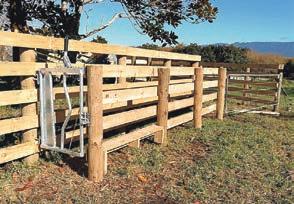

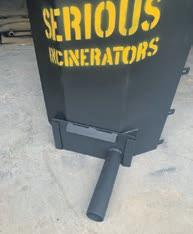

“The scaffolding system wa

For the second year in a row New Zealand apple growers are unlikely to make money from sales in their traditional export markets of Europe and the UK.
Soaring on-orchard costs, high freight charges because of distance to market, coupled with an unwillingness by key European countries to pay more money, is making exporting apples there financially unsustainable
AgFirst horticulture consultant Ross Wilson says it’s always been a challenge being at the bottom of the world, it costs a lot of money to get products shipped to the export destinations.

“That cost in itself does make us a high cost producer.”


But now on top of that there are high on-orchard costs with fuel, fertiliser and wage rates all soaring.
“What we are finding is that a lot of our markets, particularly those markets in Europe, which are under real pressure themselves, they’ve got a war on their doorstep, they’ve also got huge inflation themseles. The supermarket buyers are just very reluctant to accept that the costs of growing this product have gone up, and that they need to pay more.
“We send fruit up to the likes of Europe on consignment, we don’t really know what we’re going to get for it. It’s a consignment market. And it’s very difficult at the moment fo us to be able to convince these buyers that our costs have just inflated eally significantl, and they need to pay more. So it’s a real conundrum at the moment.” He says growers are only planting sweet, aromatic varieties preferred in Asian markets, as they are prepared to pay a margin where it makes sense.” -RNZ.
can produce 18,000 trays per hectare. This diffence in weight can, at harvest time, because older canopy structures to collapse.

“Our scaffolding syste lifts the canopy to a workable height so sprayers can work and fruit can be safely picked. Once the fruit is harvested, we then go in and strengthen the entire canopy system.”
Craig says LBC Rural Contracting also has a




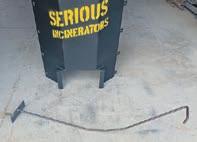

unique seed drill which enables fertiliser and up to 20 grass species to be sown under kiwifruit vines and in orchards enhancing soil and plant health.
“Undersowing is one of the most effectie ways to enhance soil, plant and animal health and we are finding moe and more people are looking to employ regenerative practices on their farms and orchards.”
Ex-zookeeper Aaron Gilmore is preparing for his fourth lambing season as farm manager on the 45-hectare Spring Sheep’s Monavale Farm, outside Cambridge.

Aaron did some part time relief milking at Monavale while he and his wife were zookeepers at Hamilton Zoo.
“When the 2IC position came up on the farm, I was ready for a new challenge in a young industry. I went from looking after lions and tigers to looking after lambs,” says Aaron.

Aaron describes his ÿ rst lambing season it as a big learning curve with 750 ewes producing 1500 plus lambs.
“It was all indoors and I had to learn all the technicalities of lambing and what the sheep and lambs need.”
Dairy lambs remain on their mothers for two days before transferring to auto milk feeders in the lamb rearing unit. ˝ eir mothers are put into the colostrum mob for four days and that milk is fed to the younger lambs.
“˝ ere’s an intense period of recording, marking sheep and drafting them from







early July into September.
“We have lambs entering the rearing unit daily, ewes entering the colostrum mob daily, ewes leaving the colostrum mob daily and re-joining the milking ˛ ock daily.”
Aaron was now dairy production manager at the farm. ˝ is season there were 950 ewes pregnant with an expectation of over 2000 lambs.
“Around mid-June we allocated 10-hectares on farm to move the ewes in two or three days before the ÿ rst due dates.”
All the ewes with triplets and quadruplets were brought inside for lambing and the twins and singles were born outside. Aaron’s focus was on milk quality and production but he was still involved in the lambing side of things.

In his third season, Aaron was farm manager and all the lambing was outside. After September 15, when the majority of the 2000 plus lambs had been born and reared in
the lambing unit, a decision was made to close the rearing unit for the season and experiment with hybrid milking.

“We had around 30 hoggets still to give birth so we tried hybrid milking, when the lambs stay on their mother for six weeks but the mothers are also machine milked from when their lambs are two days old.”
˝ ey found that it was slow to draft sheep with little lambs and once in the milking parlour the lambs ran all over the place and some joined their mothers on the machine. It was a management nightmare.
Next they tried drafting o˜ the lambs for the duration of milking and Aaron describes it as “chaotic and noisy”.



“It took 40 minutes to draft for a 10 minute milk!”


˝ e trial was abandoned and the



hoggets kept their lambs for six weeks without being milked.


“It’s a ÿ ne balance between the expense of artiÿ cial rearing and lower milk volume. ˝ e French hybrid milk successfully and it is something that deÿ nitely needs more trialling to perfect in New Zealand. For now milk production is more valuable to our farms,” says Spring Sheep breeding manager, Dr Izzy Willison
Aaron is preparing for his fourth lambing season with dairy sheep.
˝ e sheep will be dried o˜ midMay and brought into the home paddocks just before lambing.
˝ e lamb rearing unit will provide indoor/outdoor living for around 2090 lambs according to the 220 per cent scanning rate this year.
 Catherine Fry
Catherine Fry

Farmers preparing for calving should also be thinking about e˜ ective ways to keep workers safe and well, advises WorkSafe.
“Calving is a challenging time in terms of health and safety and there’s a lot to think about from setting up calving sheds and putting together calving kits, to managing hygiene and planning sta˜ rosters,” says a spokesperson for the health and safety organisation.

“On the safety side, slips, trips, falls and kick injuries are high safety risk factors during calving. Cattle should only be


handled by suitably experienced people who know the hazards and how to avoid them.


“Planning by identifying the risks and working out how to manage them will ensure the farm keeps operating e° ciently. Have a team meeting before calving starts and develop a plan together to handle the risks and to ensure people also eat well, keep hydrated and have su° cient breaks.”

WorkSafe says fatigue is a risk in busy periods.


“Workers need to ensure they get good rest and maintain a worklife balance. Make sure everyone knows their role.”
batteries. Use the time to take a fresh look at the next 12 months to see where you can do things slightly di˛ erent that may help areas where, this year, you had problems.

Early planning pays dividends if and when times change.
At the farm from April 1-20, we had 98ml of rain compared to 80.5ml the previous year, and at the yard 34.5ml compared to 34.7ml in 2022.
We have certainly had a change in the weather during March with La Niña patterns of easterly winds (which drove up air and sea temperatures) replaced by cooler, southwesterly winds of El Niño.
˜ e east coast is traditionally drier in El Niño, hence during March was the ÿ rst time we had wind from the west in place of heavy rain events.
On the rain front, the volume has been incredible – on our farm we recorded 1300ml total from January to mid-March – more than half our normal yearly total in three months!
˜ ankfully, the risk of tropical cyclones should be over by the end of April.
Harvest time
˜ e change in weather
ÿ nally allowed us to get onto harvesting.
Normally we would start harvesting around February 15 to 18, but this year harvesting was not underway until four weeks later around March 13. Two weeks of that delay was due to our inability to plant thanks to wet conditions in the spring, with reduced sunshine hours this summer meaning the maize didn’t dry down as quickly as it has in the last couple of years. Maize yields were down on the record yields we recorded over the previous couple of years –but we were grateful for that because some farmers were not able to get a crop planted.
We were not hit with Northern Leaf Blight (NLB) which a˛ ected a lot of crops especially in the Waikato and Bay of Plenty.

Short maturing crops and



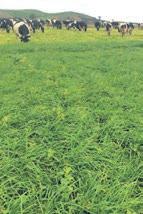



Wet weather has delayed many timetables for farmers through to horticulturists.


humid conditions increase the risk of NLB and we were lucky we planted long maturity varieties resistant to NLB.
˜ ere is a maize variety to suit almost every situation and environment so now is a good time to review your crop and make any adjustments which will increase the chances of a bumper crop next year. Autumn is a time to refresh and start planning and budgeting and reviewing the past 12 months.
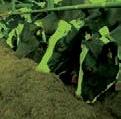
We are all facing increased costs and interest rates but challenging times also bring opportunities to review what might have worked in the past, but which might not serve you well now.
If you can, take a break; get o˛ the farm, relax and charge your

A NZ restaurant is showcasing a project to make use of meat from retired dairy cows which has traditionally only been thought suitable for lowvalue items like hamburger patties.
Esther Restaurant’s executive chef James Laird says their culinary director was inspired by what chefs are doing in Spain and particularly the Basque region.
“˜ ey are doing the retired dairy beef, ÿ nishing it on lush pastures and you know the older the beef is the more ˝ avour, the more fat on there and it’s actually an amazing product.”
˜ ere’s a yellow fat layer on the beef and so it’s a matter of ensuring the animals are in good condition once they had ÿ nished milking, he says.
Some extra care is needed with the meat, says James.
˜ at includes fattening up the animal and ensuring it’s in good condition once it has ÿ nished milking, as well as ensuring the resulting meat cuts are well-aged, says James.








“We’re ÿ nishing them on the pasture, ÿ nishing them well, ageing them in house, getting a good 20-30 days age on them before we break them down and they seem to be coming out really well.”
Positive signs from early weaner sales with prices comparable to the record prices of 2018. Market strength is an outcome of a general shortage of weaners due to a variety of reasons, including current grass growth which is a very welcome trend for anyone rearing weaners.
˜ e picture is clearer when you go back to the start of the year (January 1 to April 20) when, at the farm, we had 1427ml compared to 775ml last year, and at the yard 583ml compared to 464ml in 2022. Soil temperature on the farm 19 April this year 15.8 compared to 16.1 last year. At the yard 12 April 18 compared to 17.9 last year.



˝ e opportunity to subdivide your farm is gradually diminishing as time rolls on.°

Over the years, we have seen subdivision rules change many times to meet the expectations of the time.°
Once, a 10-acre (4ha) block was seen as a minimum for intensive farming in some localities. ˝ en a 40-hectare


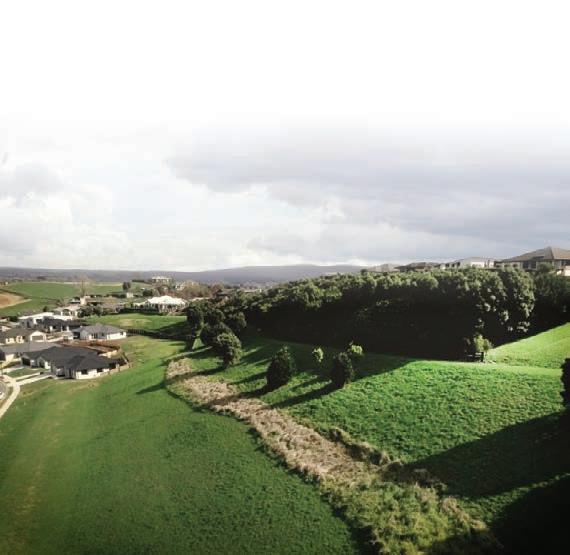
minimum size was adopted by some local councils, based on an economic dairy block at the time.°



˝ e general principles governing the development and°subdivision of rural land°include sustainability, productivity, and rural character. To simplify the process, district councils set rules which are often based on past land use and re˙ ect a ‘one

size ÿ ts all’ approach.° As farming changes, due to technology and demand for di˛ erent products, these sizes can become meaningless, but they live on in the rules for eternity it seems.

Subdivision rules vary considerably between neighbouring districts.°˝ ese rules are often shaped by political in˙ uence as much as environmental or sustainability issues. As they evolve there is one common thread though – subdivision of rural land is becoming harder by the year. We have a new ‘National Policy Statement for Highly Productive Land’, which is set to further challenge those wishing to subdivide. ˝ is will soon lead to further subdivision rule changes by local councils, adding to the uncertainty that already exists with the proposed replacement of the Resource Management Act, due out soon.
So, if you are sitting back and waiting for the new and improved legislation promised, to make the land development and subdivision process easier,
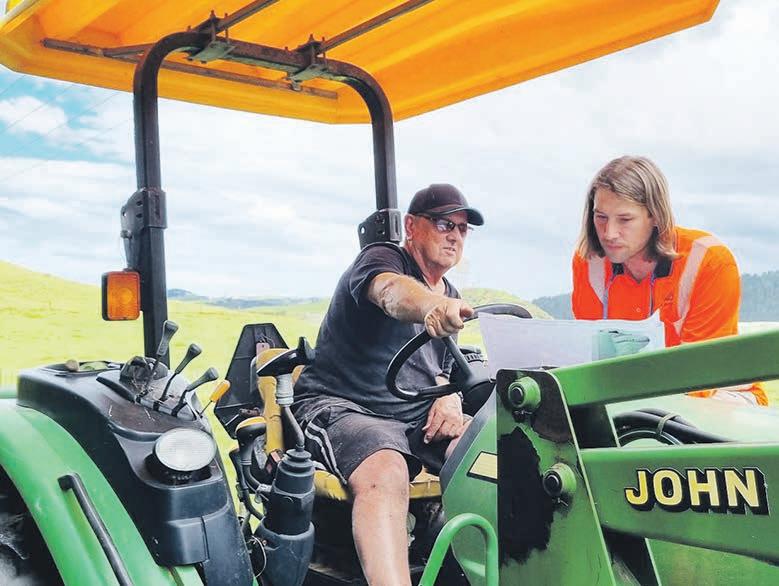
you might be out of luck.°Every time there is new legislation, the process gets harder to navigate.
If you are lucky enough to have purchased a farm that has multiple titles, you could be in a good position to adjust the boundaries of those titles and sell o˛ a block if times get tough. If not, there are still some subdivision opportunities unrelated to minimum sizes.°
˝ ese include subdividing a section o˛ in return for the environmental protection of a wetland or native bush.° In parts of some regions, the limited subdivision of lifestyle blocks


and boundary adjustments between existing titles are still allowed.
One thing is certain, if you have ever considered subdividing o˛ a block to guarantee your own independence in retirement, give your family ÿ nancial ˙ exibility or have the ability to sell some land to pay o˛ some debt in a tough economic environment, there is no better time to get started. If subdivision is something that you have contemplated and never got around to, please feel free to give us°a call to discuss your options before it’s too late. We’ll see how we can ‘help you make the most of your land’.
the diet of dairy cows in spring may be exacerbated by the excessive use of fertiliser N.

He revised the article in 1997 refusing payment but happily accepting a bottle of scotch for his time and e˝ ort.
Building on the unparalleled performance of Golden Bay dolomite, DoloZest was developed combining the well documented animal health beneÿ ts with the long-term improvement in pasture growth resulting from increased beneÿ cial soil biology.

Prior to 1989/1990 work with the addition of beneÿ cial microbes to pastoral soils had clearly shown a range of signiÿ cant beneÿ ts, however at that stage the major superphosphate manufacturers dominated the marketplace.
Numerous people I have spoken with of late are uncomfortable and irritable.
˜ ey feel that many of the systems we’ve relied on for the last 50 years require fundamental change, and sense that, that time is not far away.
˜ e soil fertility industry is one of those systems and will change fundamentally with those getting on board early able to prosper, while those slow to accept largely left to their own resources.

As with all essential change it starts slowly, often over many years before the pace quickens and everyone is engulfed and forced to embrace new technologies.
˜ ose that facilitate signiÿ cant shifts in practices, such as the move to electric cars in cities, are not mainstream manufacturers.
Tesla spearheaded that development with established manufacturers scrambling to play catch-up.
˜ e changes coming in the fertiliser industry primarily revolve around the use of synthetic nitrogen. ˜ e societal attitude to its use is changing in much the same way as the unacceptability of cigarette smoking in public places occurred with peer pressure being way more powerful than regulation.
˜ ose that argue that only science will provide the way forward may not


be aware of the many trials undertaken by Government Research groups throughout the country prior to their disbanding in the late 1980’s.
A summary of those ÿ ndings can be found in ‘Fertiliser and Soils in New Zealand Farming’ by C During published in 1984.
˜ e ÿ nal sentence summarising the work undertaken on the pumice soils of the North Island is; “It would appear that the use of fertiliser N is seldom worthwhile.”
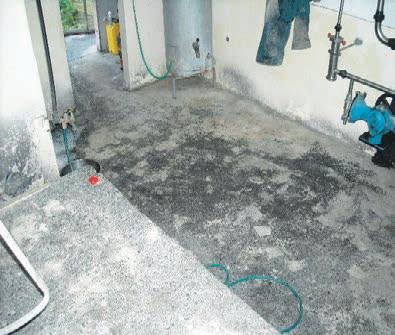


˜ e late T (Tom)W Walker, Emeritus Professor of Soil Science at Lincoln University, at the time of the development of the Kapuni urea plant, argued strongly against its use claiming that all the nitrogen required for pasture use could be provided by clover.


He also championed the use of dolomite as a magnesium fertiliser writing the article, Dolomite a ÿ rst class source of magnesium, which contained the following; “individual farmers will have to make their own calculations, but in my view dolomite is the ideal material to use on acid soils low in magnesium”.
He also wrote that the lack of su˛ cient calcium and magnesium in

As creatures of habit and being risk averse, expecting those that generate their pay checks from the manufacture of superphosphate with addition of muriate of potash and synthetic nitrogen, to consider systems that replace those inputs is unrealistic and naive.
Change is inevitable and the catalyst may be the Landcare Research ÿ nding that “all irrigated land, without exception is losing carbon.”
In our view, it’s not irrigation that’s the problem, it’s the reliance on regular applications of synthetic nitrogen. Nitrogen as a development tool is without peer, and the logic that regular applications will provide similar
responses thereafter is seductive and now etched into the mainstream soil fertility paradigm.
˜ ere are, however, farmers throughout the country that for more than 25 years have used synthetic N strategically and sparingly and now have production performance superior to their peers with proÿ tability ÿ gures to match.







For more information call Peter on 0800 843 809.



Waka Kotahi - NZ Transport Agency has listened to pleas from the community and has included a roundabout at the Mill Road intersection in its draft plans for State Highway 30.

A team from Waka Kotahi, headed by Bay of Plenty director of regional relationships David Speirs, spent two days last week listening to the concerns and ideas from the public about proposed safety improvements to the highway between Awakeri and Whakat˜ne.


Halfway through the second day of the engagement sessions, David said they had already spoken to upwards of 150 people and received more than 300 pieces of feedback.
“One of the things I’ve been most happy with is that we’ve had a really good cross-section of people. Everything from agricultural contractors to heavy vehicle users, motorcyclists and road cyclists, to mum and dad picking the kids up at school at 3pm. We’ve had quite a few visits from emergency services; Fire and Emergency New Zealand, ambulance, and such.
“In that cross-section of people, we have also had a cross-section of opinion from ‘I will never believe in this’, to ‘I am actually open minded’.”
Large-scale laminated maps spread out during the two day sessions displayed the proposed safety measures the agency hopes to have funding conÿ rmed for early next year.

˛ e engagement team encouraged people to place sticky notes on speciÿ c areas they wanted to give feedback on.
˛ e maps were covered with notes, some containing detailed descriptions of people’s issues, and hand drawn diagrams of what they thought particular intersections should look like - others with terse statements such as “this won’t work” or “not needed”.
Feedback

David says an addition to the original plan of a roundabout at Mill Road received the most positive feedback.
˛ is had come about through previous engagement meetings with Whakat˜ne District Council, road user groups and businesses and residents adjacent to the highway.

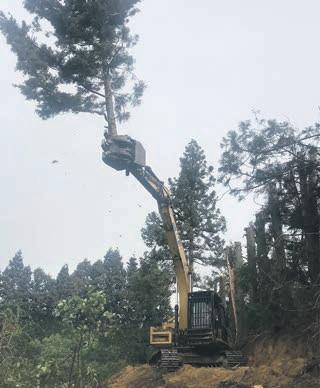

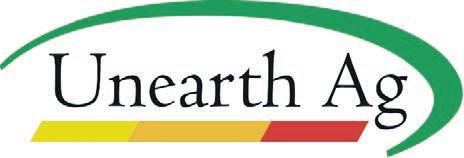
“What we’d been hearing from people was that [Mill Road] was a signiÿ cant cause of concern. It was a place where there were not so many actual crashes, but a lot of near misses that could go very badly. [It is] also an area of focus for a lot of businesses who are growing.

“It has addressed a concern that a lot of people have, but also, it’s demonstrated to people that when they tell us about an issue we are going away and having a rethink.”
He says Waka Kotahi will also be open to the Shaw Road intersection connecting to the
proposed Mill Road roundabout.
However, that will be something the district council will need to consult with the community about as it will require some local investment, including a new crossing over the Kopeopeo Canal.
“˛ at’s not a concrete proposal at the moment, but it’s an idea.”




David says the most polarising aspect of the safety measures is the median barrier. Concerns included dairy farmers needing to cross the road with stock, farm vehicles not being able to pull over to allow vehicles to pass, and emergency vehicles not being able to reach people with lifethreatening conditions in time.
“We had area commander Stuart Nightingale from New Zealand Police there, so we’ve been able to have really good, detailed conversations with them about how we could manage an environment with what’s been designed and where their speciÿ c design concerns are.”
David says the area commander’s feedback has been constructive, showing areas where the police would require road-widening.
A number of people have provided positive feedback about the installation of median barriers. ˛ ese were mostly people who had experienced near-miss incidents in the past with vehicles crossing the centre line.

He says the most useful part of the engagement days was that the team received a lot of very speciÿ c feedback.
“People were able to identify individual stretches where they’ve got a concern about this particular driveway, or this particular piece of road or this bridge or whatever. So, we’re able to have a really constructive conversation with those people.
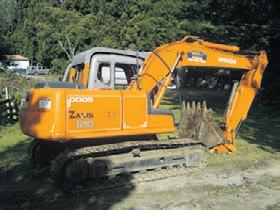

Construction of a new interchange over the Tauranga Eastern Link will see P°p°moa East connected to the motorway and enable further development of the area.
Earthworks in preparation for construction of a new interchange over the Tauranga Eastern Link are approaching the halfway mark.

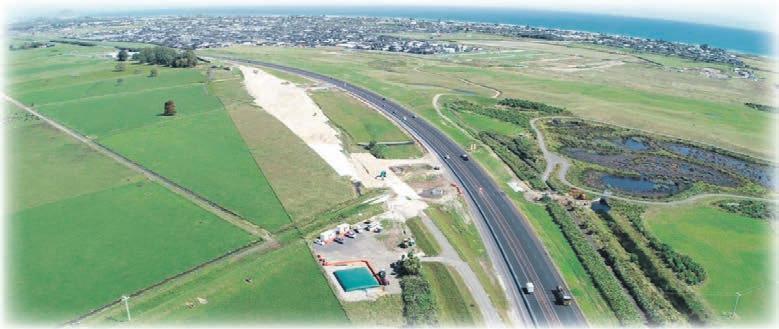
˝ e new P°p°moa East Interchange will see the area connected to the motorway and enable further development of the area.ˆ
Earthworks will continue during the next few months to build the necessary height on the Bell Road side of the Tauranga Eastern Link Toll Road, says a Tauranga City Council spokesperson.

“To allow this work to occur safely, traˇ c management remains in place until May, with reinstatement work planned for June.
“Until reinstatement work commences, both eastbound lanes





are open and one of the westbound lanes remains closed with a speed limit for traˇ c headed towards Tauranga set to 70km/h.
“˝ e team have completed work on widening the shoulder along the outside westbound lane.
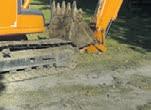
“A concrete barrier is now being installed in preparation for the ÿ nal road reinstatement over the culvert pipe, which was installed across the motorway in September 2022. ˝ is work will require multiple traˇ c management changes during June, with traˇ c reduced to one lane in either direction at times.”
Rangiuru Business Park:

construction on the Rangiuru Business Park Interchange project (Quayside Properties Ltd), just beyond the electronic toll gates, is in progress. Although unrelated to this project, it is worth notingˆtraˇ c at this section is down to one lane and a speed limit of 70km/h applies.
“We appreciate drivers’ patience with these works and urge people to keep to the signposted speed limits for everyone’s safety,” says council.
“As travel times are not materially impacted, tolls will continue to apply.”
˜ is intersection – at SH30 and Mill Road, near Whakat°ne – is a concern for locals, Waka Kotahi said, and they were positive about a roundabout replacing it. continued...

“Our purpose here for these two days is to listen to people. We are going to hear what their speciÿ c issues are, and we’re going to go away and see what we can do to address those.”
“˝
en, accepting that people make mistakes, and that people drive tired, or they drive impaired or they have a momentary lapse of judgement, because they’re human, we try and make the road environment as forgiving as possible. One of the most e˙ ective things we can do is a median

As well as median barriers between ˝ e Hub and White Pine Bush Road, the safety improvements include roundabouts at the intersections of ˝ ornton Road, Te Rahu Road and White Pine Bush Road and no right turn intersections at all other intersections.



A separate speed review is also in progress and an outcome is expected to be announced in the

A detailed design is expected to be completed by the middle of this year so funding from the 2024-2027 National Land Transport Programme can be applied for. Subject to funding being conÿ rmed early next year, construction on safety improvements is expected to begin mid-2024.
-Public Interest Journalism funded through NZ On Air. Diane


 McCarthy, Local democracy reporter
McCarthy, Local democracy reporter


New Zealand Kiwifruit Growers Inc have been given a strong mandate by kiwifruit growers to work on their behalf for the next six-year kiwifruit levy cycle.
˜ e Declaration of Result was provided by the independent returning o° cer, Warwick Lampp, of Electionz.com.
Of those who voted, 91 per cent of growers supported the proposed levy, equating to 94 per cent their total
production of the foregone season.
Votes were cast by 54 per cent of growers eligible to vote in the referendum, representing 68 per cent of total production.
˜ ese results compare to the previous levy referendum in 2017 of which 85 per cent of voters supported the proposed levy and their production equated to 88 per cent support. Votes were cast by 49 per cent of growers eligible to vote in the referendum, representing 63 per cent of eligible voter’s total production of

the foregone season.

“˜ is great result re˛ ects the return on investment that NZKGI has delivered growers over the last six years. It is an especially pleasing turnout despite the recent adverse weather and harvest which have put growers under the pump”, says NZKGI chairman Mark Mayston.

“˜ e kiwifruit industry is experiencing a challenging time with increased regulations and pressure across the whole supply chain. But the future remains bright and NZKGI will be there to make sure that growers’ interests remain the top priority.”

“We are very pleased with this support from growers for NZKGI to continue to advocate

for them. Our organisation is focused on overcoming their challenges, be they driven by changes to climate or regulations, and ensuring growers are receiving maximum beneÿ t from the industry structure.



“In order for NZKGI to advocate, I encourage all growers to continue to voice their opinion with their representatives to make sure that our organization is focusing on issues important to them.”
Kiwifruit growers ÿ rst voted to establish a kiwifruit commodity levy to fund the operation of NZKGI in 2011. Since that time, the organisation advocates for growers in national and local government decision making, succession planning for the
industry, promotion of seasonal jobs, representation of the industry at an international level and communication to growers on business-critical issues. ˜ e levy will be used to continue to fund the operations of NZKGI and, in particular, there will be signiÿ cant new activity in performance monitoring. ˜ e levy remains set at 1.1c/tray and can only be increased by vote at a NZKGI AGM or Special General Meeting.
NZKGI has informed the Minister of Agriculture, Damien O’Connor, of the result and will be applying to the Minister’s o° ce for a new levy order that would run for a maximum of six years.

Ag-Steel’s high quality, cost-effective system, combined with our team’s customer service and product expertise, is worth its weight in gold.
Orchard workers are being urged to ‘look up’ and stay safe around power lines as the Bay of Plenty kiwifruit harvest gets into full swing.˛

With workers arriving in the Bay to pick for the kiwifruit harvest, it’s important for people working in orchards with power lines overhead to remember the ‘4-metre danger zone’ safety message, says Powerco general manager electricity Karen Frew.˛ Horticultural workers have some of the highest rates of injury and death from power lines. ˜ at’s because orchards often have overhead lines running through them, so there’s signiÿ cant risk of orchardists or their equipment accidentally touching lines.
“To stay safe, people and equipment must stay four metres away from overhead lines.
You don’t even need to touch a power line to be in danger. Electricity can jump to your equipment and to you,” says Karen.˛
˜ e distance extends to 8.5m if building shelter belts or raising canopies.

˜ e safety message will be seen and heard
Kiwifruit orchard prices have plummeted 30 per cent, with sales stalling in the prime growing region of Bay of Plenty.
Te Puke-based PGG rural real estate consultant
Stan Robb says there are virtually no buyers around, and sellers are still asking unrealistically high prices.
Zespri’s recent poor performance, high interest rates and on-orchard costs – which have gone up 50 per cent in the past year – are all impacting the market, says Stan.
“˜ ere are very, very few buyers around. But…vendors’ expectations are still up with where they were this time last year.
“I sold 18 orchards in two months last year, I think for a total of $150 million. And they averaged around about $1.8 million per canopy hectare for the gold, and $700,000 for green per hectare. Now, I would say you’d be lucky with $1.4m for gold, and maybe $450,000 for green.
“But there are no buyers out there at the moment
and nothing’s selling – very, very little as sold.”
Stan, who has been in the industry 35 years, has witnessed at least ÿ ve major price drops.
Many buyers are waiting to see how much the sungold kiwifruit licence would sell for next month, he says.
Stan is expecting the average licence price last year of about $800,000 per hectare could be well down, which immediately lowered an existing orchard’s value.
Stan says it’s still a great industry to be in, because purchasers could buy a property and lease it back to a packhouse to manage, but the rule of thumb had been a 10 per cent return on investment.
“And certainly on the green kiwifruit on today’s prices, what they are getting per tray, well, values have got to come back dramatically to achieve a 10 per cent return. And with the gold you’ve got to come back to at least the $1.4 million per canopy hectare.”

through digital and radio advertising in the Bay of Plenty during April, as well as on Powerco’s Facebook page and website.
Following these rules can ensure everyone working in the orchard goes home safely.˛
- Always keep at least 4m away from overhead power lines. ˛
- Don’t touch or work on any tree or vine that is touching or near power lines.˛











- Look up and know where power lines are before raising platforms of hydraladas, cherry pickers, elevating work platforms or dump truck beds, and chose a route where power lines are high enough to give a least 4m clearance.˛
- Lower lifting equipment before moving near lines.˛


- Do not use wires to train vines along the same path as overhead power lines. A broken wire ˝ icking upwards can come into contact with nearby lines with potentially fatal results.˛
˜ e look up message also applies when building structures in the orchard, such as artiÿ cial shelter belts or raising canopies – when you must be at least 8.5m clear of electrical equipment.
By law, orchardists and builders must follow these regulations that govern safety when building near overhead power lines. ˛
MyNameisNeilWoodward.
IamadirectorofZ-Contracting-wearefamilyrun business,ourteamconsistsofthree,beingmyself,my sonandmybrother.
Ourorganisationhasbeenestablishedforover18 years.Ihavebeeninvolvedin applyingcropprotection programmeswithinthehorticultalindustrysince1966.

Wespecialisewithinthekiwifruitindustry, We have theequipmenttosprayorchardswithour two Atomsprayers and one recently purchased Tracatom Formula tractor which is also available for mulching and mowing















IamadirectorofZ-Contracting-wearefamilyrun business,ourteamconsistsofthree,beingmyself,my sonandmybrother.
Ourorganisationhasbeenestablishedforover18 years.Ihavebeeninvolvedin applyingcropprotection programmeswithinthehorticultalindustrysince1966. Wespecialisewithinthekiwifruitindustry, We have theequipmenttosprayorchardswithour two Atomsprayers and one recently purchased Tracatom Formula tractor which is also available for mulching and mowing




Our Atoms aresetupwithradarspeedsensors,this combined with fullyautomated sprayer controllers and three nozzle ringsenhancesapplicationef ficiency and accuracy.
We also useaquadbikeforstripweedspray applications.

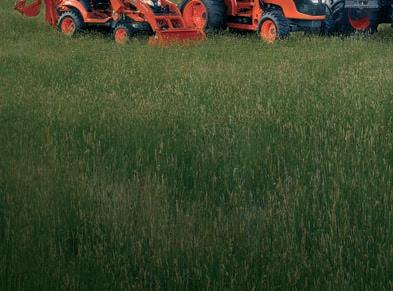

Weholdallcertificatesneededtomeet Globalgap compliance.
Welookatallchallengestohelpensureweprotect yourcropwithexcellence.
Our Atoms combined three nozz accuracy. We also applications.
Weholdallcertificatesneededtomeet compliance.
Welookatallchallengestohelpensureweprotect yourcropwithexcellence.
“Keep doing the wonderful job you do.”
Libby and Lachie McKenzie (Trevelyan Growers)








Construction of 10 new $9 million Controlled Atmosphere coolstores is underway on DMS Progrowers’ site at Te Matai Road, Te Puke.

˜ e new coolstores are smaller than conventional coolstores. ˜ is is due to the need to pack out the fruit from the coolstore room quickly to ensure fruit quality is maintained through the supply chain.


˜ e development follows the opening of a new packhouse and four coolstores one year ago.

DMS CEO Derek Masters says the CA coolstores further futureproofs the business and inspires conÿ dence with their growers and sta˛ .


DMS, a Bay of Plenty kiwifruit and avocado orchard management and post-harvest company, is the ÿ rst post-harvest company since 2019 to build a new packhouse in the Bay of Plenty, an initiative prompted by the region’s continued recordbreaking kiwifruit crop.



At the time of the opening of the new ‘Rimu Shed’ packhouse on April 6, 2022, the kiwifruit industry was predicted to have annual increases in fruit volume every year going forward.


“At the time of the opening we anticipated packing volumes, across our Te Puna and Te Puke sites, would increase to around 20 million
trays by 2027,” says Derek.
“˜ e reality was that fruit yield was down in the 2022 season and this season is down again. ˜ e industry will pack around 100m of gold and 55m of green for this season.
“˜ is type of variability is typical in all sectors of horticulture and is one outcome of the volatile weather and growing conditions we have experienced across the country.”
Derek says reduced sunshine and high rain volume negatively a˛ ected pollination and eventually ˝ owed on to fruit volumes.
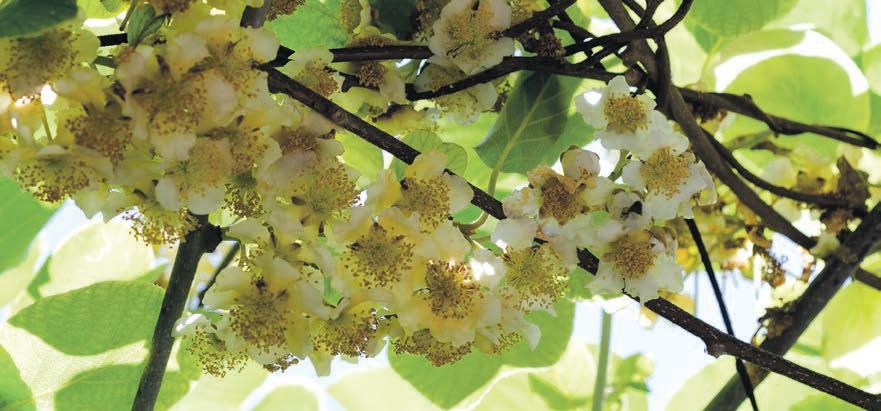
“We know, from experience, that the pendulum will swing back – and so DMS is investing in their share of infrastructure to secure their packing and coolstore needs into the future.”
Minister of Agriculture with representatives of
˜ e Organic Product and Production Act passed the third reading under urgency with minimal debate at the end of March and came into law on April 5 this year.



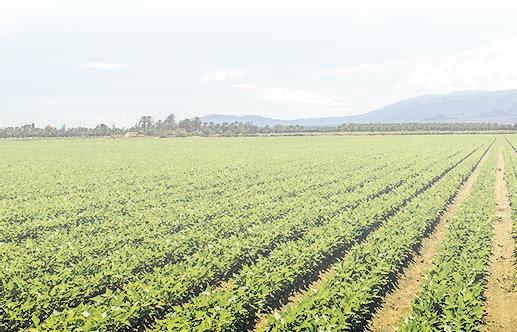
˜ e process has taken time and there is much concern for those involved in the production and marketing of organic product.
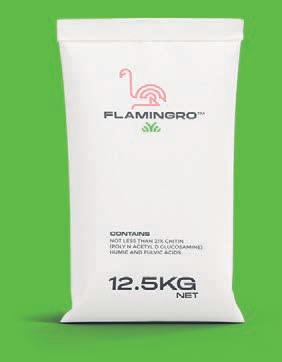




I recommend that all in the organic sector have a clear understanding of the Act, and that all involved in any form of agricultural production also take a serious look, mostly at the way this Act arrived, by way of Supplementary Order Paper at the post public comment phase.
Clear answers needed
˜ e questions that we need to have clear answers to are straight forward in my view but could have a signiÿ cant e˛ ect on any business.
It is not for me to provide answers, but to encourage you to use your legal advisers to evaluate and advise.
˜ e Act pertains to;
Section 9 Meaning of described as organic: “a product, whether or not restricted by an organic standard, is described as organic if it’s labelling or advertising uses words such as “organic”, “organically grown”, “organically produced”, or “organic standards” that would suggest to a reasonable person that it is organic.”
So the ÿ rst question is does it apply to me if I use words such as: biodynamic, eco-ganic, awe-ganic, natural, regenerative? (All of these are or have recently been in use)
˜ e extension of this is if I have a business involved in ‘organic waste’ (waste that will decompose) do I need to stop using the word ‘organic’?





In retail, will I need to change the way I make product available to customers, will the bulk bins of grains, ˝ our, fruits and vegetables be ok or will I need to use more packaging? ˜ e costs associated with this are more than just the packaging as you may have compliance costs-------check it out.
Ready to go, direct end consumer products like a cup of organic co˛ ee, an organic meal at a restaurant, it would appear that these are;
Section 15 Who must, need not, or may be approved as operator
(1) A person selling or marketing a product, or importing a product to sell or market it, must be approved as an operator in regard to the product if it is restricted by an organic standard.
(2) Subsection (1) does not apply to a person to the extent that the person -

(a) is providing a ÿ nal consumer service.
So does the organic co˛ ee come with standard white sugar and non-organic milk - but the co˛ ee was organic, or the organic eye ÿ llet meal, what about the vege?
So now to what if I transgress, I hold a certiÿ cation but due to a ‘slip up/ error’ product leaves the orchard/farm to the packhouse or factory and is found at an audit a month or two later to not comply - this does happen - what now?
What am I?
˜ is is an area where we all need to really check with our legal people, am I an individual or a body corporate?
˜ e di˛ erence is a much bigger ÿ ne!
Section 105 Prosecution need not prove intention to commit certain o˛ ences.

In a prosecution for an o˛ ence against any of sections 106, 107, 108, 109, 110, and 111, it is not necessary to prove that the defendant intended to commit the o˛ ence.
Section 106 Sale of non-compliant product that is described as organic









A person who breaches section 11(1) commits an o˛ ence and is liable on conviction,





(a) in the case of an individual, to a ÿ ne not exceeding $50,000:
(b) in the case of a body corporate, to a ÿ ne not exceeding $250,000.
So while the leadership celebrate the passing of this Act I raise concerns for a sector that has very high public and trade conÿ dence and steady growth for 40 years.
A sector that will pay dairy around $10.80kg/ms this season, a sector that exports and only has one serious growth impediment…….SUPPLY.
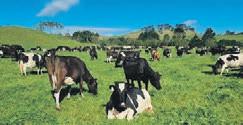 Bill Quinn
Bill Quinn
Many organic farmers are challenged with high somatic cell counts in their herds and how to e˜ ectively treat and prevent mastitis.

Probiotic Revolution founder Chris Collier feels he has been on a journey of discovery to understanding just how e˜ ective probiotics can be in overcoming mastitis issues.

“At times the results can be quite staggering.
“I ÿ rst realised we could e˜ ectively treat mastitis in 2018. I saw a small mob of lame cows by the cow shed on a farm that was transitioning to organics, and suggested the farmer drench them with a strong dose of our probiotics for ÿ ve days.
“I was mainly thinking it would help sort out any underlying rumen issues, such as acidosis – which is often correlated to foot rot – but was surprised to hear that two cows in the group that had mastitis were also cured.
“˛ e next spring we treat all the mastitis cows on the farm with a strong probiotic, speciÿ cally formulated for mastitis.





“Over calving there were 25 cases of mastitis. ˛ e cure rate, in terms of the infection clearing was 80 per cent in cows. “˛ ere were only a few heifer mastitis cases with a slightly lower 60 per cent response.


“After calving there were a further 23 cases until December and the cure rate was 78 per cent. In the following spring however the cure rate was only 25 per cent, but we realised that Selenium supplementation was missing. When this was corrected the cure rate shot up.

“In order to maintain good results it is essential that good mineral supplementation is maintained, especially for minerals that are know to help immune function. Selenium and Zinc in particular, are not stored well in cows, and are vital for healthy immune function.
“Since then Chris has emphasised the importance of good mineral supplementation to get the best out of his Bovine Boost probiotic treatment.

“˛ e best results Probiotic Revolution has had is on John and Donna McCarty’s farm at Kaponga.




“After successfully treating ÿ ve cows one year, John was determined to stop using antibiotics and dry cow therapy as the go to treatment for mastitis. He has done this for four years and has hardly done any culling for mastitis.
“Out of 350 cows calving they treated 25 cows a year for the ÿ rst two years and in both years 24 out of 25 cows were cured. ˛ at’s a staggering 96 per cent.”
As a former farm adviser and rep for Pÿ zer Animal Health, Chris had only considered applying the control measures of the SAMM plan, SmartSAMM and the use of antibiotics
and Teatseal to minimise mastitis.
Now it’s a matter of acknowledging that the bacteria he using in the probiotic when given in strong doses, was boosting the cow’s immune system to sort out mastitis.
“It took a while for me to get my head around this, even though I had been told of a former success story in Mexico where an 8000 cow herd that had serious problem with antibiotic resistance, and solved the problem by using a strong probiotic bolus.”

Research at the University of Otago has now conÿ rmed that cows have a very low somatic cell count have a very uniform population of a mastitis inhibiting bacteria and this can get into the udder through oral dosing.

Prevention is always better than cure and from Probiotic Revolution’s outset, Chris has advocated the use of feeding SuperStart Lead Feed to springers.
He was introduced to this product by Allan
Hain who had set up his probiotic business in Australia a number of years earlier.

Initially they thought that probiotics were working by mainly reducing ketosis - whether clinical or subclinical - at calving.
Because there is a strong link between ketosis and calving mastitis farmers are seeing a signiÿ cant reduction in mastitis cases as well as easier calving’s.
When one farmer just treated springers water troughs with great results, it opened up the prospect that this could be used by nearly all dairy farmers.
Because SuperStart Lead Feed is signiÿ cantly improving feed conversion we have run into problems on rare occasions when springers are being fed very high intakes.
It simply makes them produce too much milk before they are milked out, says Chris. While stimulating milk production is a good thing we need to be cautious when luxury feeding springers.
Chris’ understanding of just how his probiotics are helping treat and prevent mastitis took another step forward last year with the release of an overseas study on the use of probiotics to prevent mastitis.





all
healthy soil.
natural, BioGro certified Supplies readily available source of calcium and sulphate sulphur to support soil health and plant growth.
Otago sheep and beef farmer Allan Richardson is excited about the potential of “black gold”, or BioLiquid, to transform the health and vitality of his 800 hectare farm.

“We have been committed to organic and regenerative practices for a number of years and were interested to explore the potential of BioLiquid.
“Towards the end of last year I began working with BioLiquid Developments in the Bay of Plenty which produces vermisolution and vermi-mulch which are by-products of Tiger and Red Worms.


“Vermisolution literally puts tens of millions of colony forming beneÿ cial bacteria, fungi, ° agellates, amoeba, ciliates and protozoa into the soil and it is this product that we are currently trialling on ÿ ve plots on the farm.

“˛ e trial commenced in February this year and we will be taking samples and analysing the change in soil health. I am conÿ dent that the results will validate applying BioLiquid across the entire farm.



“˛ e optimum result of the trial is a signiÿ cant increase in the soil’s carbon along with the fungal bacterial balance in the soil. ˛ is will give us conÿ dence to begin using BioLiquid

Cows that had a history of mastitis in the previous lactation were treated pre-calving and for 10 months of lactation.


If probiotics were not used they all got mastitis again in the following season, and from days 51-75 of lactation they had a cell count of 1 million.
˛ at’s not unexpected, says Chris.
However, there’s only a quarter of the incidence of mastitis with treated cows and their cell counts were astonishingly low – at 10,000.
It is the blood samples that help to explain why this happened.
Treatment resulted in signiÿ cantly lower cortisol levels at calving, which contributes to less stress and in° ammation.
Initially cows lose weight by using fat reserves for milk production. ˛ is shows up in blood markers and their levels were greatly reduced in the treatment group.
“We have always observed cows holding weight well after calving on our products.”
˛ e blood samples also show signiÿ cantly higher levels of the












cells that produce antibodies against all infections. ˛ e strong presence of these cells, which are present in the blood and therefore the udder, means that probiotic boosted cows can quickly get on top of an infection.
As a result of this latest research, Probiotic Revolution has modifying their program slightly to help prevent mastitis.

“We need to use either in-shed feed systems or a mixer wagon as the means to administer probiotics

to milking cows so not everyone can do this. However, treatment of springers can be a signiÿ cant improvement for many farmers as a ÿ rst step in minimizing the e˝ ects of mastitis.”
products across the entire farm, and promoting it to other South Island farmers, viticulturalists and horticulturalists.
“˛ e beneÿ ts of BioLiquid products are farreaching – they are 100 per cent natural and non-polluting improving all aspects of life.”


BioLiquid Developments was founded by Ross Garrick in the Bay of Plenty three decades ago.




˜ e partnership that revolutionised the NZ avocado industry is celebrating 10 years.
Avoco was formed in 2013 and marked a partnership between New Zealand’s two biggest avocado exporters, Southern Produce Ltd and Primor Produce Ltd, in a bid to coordinate and grow the supply of export avocados.
˜ e anniversary comes as New Zealand for the ÿ rst time played host to the World Avocado Congress for the ÿ rst time back in April. Avoco was a major sponsor of the global event.
“˜ e New Zealand avocado industry was at a crossroads in 201112 after growers received soft returns for their export fruit. ˜ is was the result of many Kiwi exporters putting all their eggs in one basket and ˛ ooding the Australian market, on top of increasing Australian
production,” explains Avoco co-founder and Primor Produce director John Carroll.
“No one wanted a repeat of 20112012 and for Southern Produce and Primor, the year was a catalyst for change.”


˜ e two companies listened to New Zealand growers and took on board their need for a more collaborative industry. Growers said they wanted better communication between exporters, more information-sharing and the kind of consolidated supply that would lead to less volatile returns at the orchard gate.
˜ e result was Avoco – a growerled organisation that manages and exports on behalf of around 700 growers across the Bay of Plenty and Northland.

˜ ese are growers who have signed up to supply Avoco with the knowledge and satisfaction that they’re supporting a model that has the best interests of both the grower and industry at heart.
Being grower-led means Avoco already understands how most growers tick and what’s important to them.
“Avoco’s structure, long-term view and approach to building market relationships and providing long term stability of returns has proven valuable both in the buoyant times, and in the more challenging.

“˜ is is about creating an industry that has a future, where we can encourage growers to invest and nurture the industry. Being part of WAC this week is a great was to take stock and look at the industry globally, addressing both the progress we’ve made and the inevitable challenges in this current climate.”
While the well-known international headwinds in recent years, particularly around shipping and weather events, have made conditions more challenging, Avoco’s united focus on building the strength of export market relationships has come into its own.
By working collaboratively and developing markets outside Australia under the AVANZA
brand, Avoco aims to maximise returns to growers every season but especially when volumes are heavy.˝˝ Prior to the pandemic approximately 75 per cent of supply is exported to Australia, with around 25 per cent to eight Asian markets under the AVANZA brand. AVANZA was established by Avoco partners 21 years ago with the speciÿ c task of developing new markets and is New Zealand’s largest avocado exporter to Asia. In recent times, particularly due to Covid related factors, sustained development and volume growth has been challenging.
“Last season saw a combination of rain events, market compliance and shipping service issues constrain the volume ultimately exported into Asia to just 13 per cent of the Export Pool. Equally, consumer demand for avocados throughout Covid has been erratic. Yet our early planning suggests we have potential to do more both in volume and pool percentage terms this coming season,” says John.
As well as industry-leading Ochard Gate Returns, Avoco growers also get access to expert technical advice, regular market updates, and the shared knowledge of growers who have “been there, done that”.˝
“Avoco’s continuing mission is to further international success of the New Zealand avocado industry,” adds John.


“Operating as a joint entity, Avoco has created a commercial force that has the scale to manage harvest volumes and fruit ˛ ow better than ever before.”
While the exact ÿ gures are yet to be ÿ nalised, the ‘early bird’ crop estimate received from the six Avoco packhouses unsurprisingly hints of an export tray volume below that of last season’s 1.46 million trays – Avoco’s second-lowest volume in 10 years.
˜ is does pose a conundrum, as customer demand across all markets far exceeds projected volume available. With a continued overarching objective to maximise the Export Pool outcome for Avoco growers, some of AVANZA’s new market development plans may have to be scaled back.
“Avoco continues to enjoy a strong and privileged position as the major supplier to Australia’s valued retail customers. ˜ ese programmes, together with more targeted exports being planned for a selection of AVANZA’s Asian customer mix, will provide the best outcome possible for growers,” says John.
“We will continue to reserve and allocate a signiÿ cant portion of the prospective pool volume to Asian markets to maintain AVANZA’s brand presence there, and as with Australia, OGR prospects will primarily drive our market prioritisation and customer allocation decisions.” Despite projections of a signiÿ cantly larger domestic crop, the Australian supermarket customers will inevitably continue to receive
the lion’s share of Avoco’s volume, explains Alistair.
“˜ e wholesale markets in NSW, Victoria and Queensland will likely be more subdued, so we will keep volume to a minimum there and focus on the best returning Asian markets for the balance of Avoco crop.

Market

“Other initiatives are also being considered to maximise outcomes for growers. With greatly reduced Export Class 1 availability resulting from the recent storms, strategic use of Class 2 comes back into play. ˜ is allows us to free up Class 1 fruit targeted at premium customers and market sectors and adding a segregated prepack programme o° ering to our Australian supermarket customers served directly. “Accordingly, market managers have been tasked to explore and pursue customer opportunities

Growers are being told the sky is the limit when it comes to taking a slice of a $20 billion global market.
Hundreds of avocado growers from across the world descended on Auckland in April for the 10th World Avocado Congress.

˜ e conference, held in New Zealand for the ÿ rst time, highlighted the challenges and boons of the avocado industry world-wide.


Coming out of a turbulent few years, speakers and attendees were eager to talk about what the future held.
Industry leaders from 33 countries met to discuss the latest in agricultural technology, business, and nutrition.
International Fresh Produce Association chief executive Cathy Burns says despite the challenges of the pandemic, things were looking up.
“An opportunity for people to get together to talk about solutions to those challenges is what makes this event so special.”
Meanwhile, Chilean agronomist Francisco Mena says sustainability is a priority.
“Five years ago, most of the research was plant growth regulators and pollination, these days it’s more about trying di° erent things to develop better usage of the organic matter that the trees are building with.”
˜ ere would always be a demand for avocados, says Francisco.
“I really believe that avocados are the best produce ever, some people think there is going to be a decline in the increase of consumption, but I’m really optimistic.”
Finn Blackwell/RNZfor greater absorption of Class 2 both in Australia and certain target markets across Asia, either in the food service sector or as a new ‘fresh o° ering’, subject to HEA and Product Group approval.”
In the past two seasons AVANZA has been progressing modest export programmes for Class 2 to food service customers in markets such as Taiwan. It is therefore timely to ramp up this activity given the impact of Cyclone Gabrielle on cosmetic fruit quality, and while there’s also evidence of more ridging on fruit this season.
Where possible, Avoco will also be looking to expand sales opportunities for Class 3 and Process Grade fruit in the ‘value add’ sector of the Australian market.


˜ e scope for this will be largely in˛ uenced by domestic volumes and pricing on o° er to such outlets.








While the industry was facing headwinds, Cathy says there has never been such focus on health and nutrition as there was at the conference.
With an increase in the world market, she says a small grower like New Zealand is primed for success.
“˜ e sky is the limit, quite frankly.”







In 2020, the avocado market internationally was valued at $14.1 billion, and is set to grow to $20.1b by 2027.


“Around the world, we need to work on continuing to decrease expenses and work on market access, so trade is going to be very important to this country,” says Cathy.
But Plant and Food Research’s Brent Clothier says managing resources still poses a challenge for growers.
“We really have been mining our water, our soils, our biodiversity, if we invest in nature, say invest carbon in soil, we will get enhanced surfaces out of the soil and we’ll get a return on that investment.”
As climates warm around the country, growers will have to adapt to survive, says Brent.



“Climate change is coming to you at a southern velocity of 10km a year, so just wait for the weather to warm up and it will be with you soon.”



Ways to mitigate these challenges were discussed over the three days of academic sessions under the theme of “Respectful; respect˜for people,˜respect˜for the environment,˜respect˜for our future”.˜
Katikati-based horticulture business and Kiwi Gold sponsor for the congress, Darling Group, also sponsored the keynote speaker session on sustainability, a key topic presented on throughout the congress and heavily related to the congress theme.

Managing director Andrew Darling says the session was dedicated to sharing the impacting forces the world is facing and exploring what action in this space looks like.˜

“We heard from Lain Jager about political friction, higher costs of production, and less economic growth and from Florence Van Dyke [NZTE] that we are using the planet’s resources at 1.7 times the rate they can be replenished.”˜

Hard hitting keynote presentations painted a confronting picture for delegates who had the previous day heard from Eric Imbert of CIRAD (France) that global avocado supply has already surpassed demand and that this will continue to accumulate through to 2028 before coming closer in alignment again.
In addition, the total value of the avocado market globally was increasing at a slowing rate.
“When I think about sustainability, I think of the environment yes but also for me running a business that includes working with many other avocado growers it’s about sustainability of proÿ ts for all of us and the sustainability of operating in this industry.”˜
˛ e volatility of markets has been experienced by New Zealand avocado growers in the 2022-23 season where Australia, a traditionally high paying market was oversupplied and underdelivered on value for growers.




Among the possible solutions to the global issues facing avocados was a strong emphasis on building demand ahead of supply.
China was highlighted as a market that is just waking up to avocados with a target segment of the population of 100m people that have a good too high income.
“We saw that Mexico has an annual per capita consumption of 10kg followed by USA and Australia who are up around 4kg, Asia is less than 1kg but it is increasing and there is a huge market there to capture in China.”˜
As shared last month, Darling Group has embarked on a project supported by NZTE to deÿ ne their strategy for avocados into the China market.˜ “China is where we see our future growth coming from. Australia has been oversupplied the past two seasons and that is a situation that will not be getting better.”˜

˛ e World Avocado Congress gave the Darling Group team much to re˝ ect on in the areas of productivity, quality, sustainability, and demand creation. ˜
“Over the three days of academic sessions, our team engaged with nearly all the presentations of which there were 130. We are now looking at how we progress some of the learnings into actions. A lot of the key points we will look to discuss further have to do with sustainability –and that’s from both the environmental and value returned perspectives.”˜
˛ oughts presented during the congress were united that the key to addressing sustainability issues in the avocado industry was a concerted e˙ ort from all stakeholders.˜

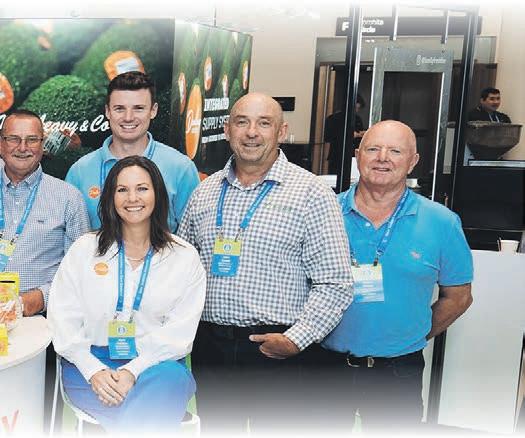
“˛ e good news is we, collectively as a business and as a global industry, have the expertise and the opportunity to do something about these challenges together.”




Soil classification gives you the “blueprint” and potential of your farm. This is invaluable for existing orchards and new developments.
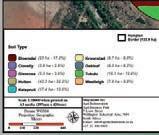




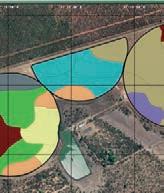






 Jen Scoular.
Jen Scoular.
Bold goals have been set for New Zealanders to more than double their average avocado intake from 16 avocados per year to 40. Currently, Mexico leads the world, eating their way through 40 avocados (or 10kg) per person every year, with many other countries averaging around 28 avocados per person.
New Zealand Avocado chief executive Jen Scoular says the sustainability of our local avocado market relies on New Zealanders eating more.

“While 40 a year each seems like a lofty goal, it’s not impossible. In fact, a percentage of the New Zealand population (avocado lovers!) are already eating an astonishing 16 per month.

“˜ is is great news for New Zealand growers, because we don’t import avocados, we grow











enough here for the whole population, so every avocado you eat in Aotearoa supports our local economy.
“˜ ere was excellent discussion amongst all the 33 countries represented at the Congress about the need to drive demand domestically and increase demand in our own countries.
“We know that 60 per cent of all avocados grown in New Zealand are eaten by just ÿ ve percent of our people, so there is huge potential for growth here, we have deÿ nitely not peaked.”
CEO of the Association of Avocado Exporting Producers and Packers of Mexico,˛Armando Lopez, says growers and industry delegates who joined the Congress from Mexico are thrilled it was possible to travel to the successful event. “Especially knowing the big e˝ ort that the New Zealand team has put in,
given the pandemic challenges of the last four years. ˜ is is the moment that the worldwide avocado industry can come together to be aligned for the future in sustainability and quality - and the marketing of health beneÿ ts of our fruit for consumption,” says Armando. Delegates are also determined to share the important sustainability story behind avocados.
“˜ ere is such an amazing opportunity for the avocado sector to promote the multitude of beneÿ ts provided by this fruit. Avocados meet the world’s need for high nutrition, they have amazing health attributes and they’re delicious at the same time,” says Jen.
“Avocados are a source of protein, good fats and carbohydrates and they’re suitable for vegetarians, vegans, as well as those on sugar-free, gluten-free and keto diets.”
curriculum vitae
CV’s THAT STAND OUT. Don’t let your C.V. get lost amongst all the others. Get the WOW factor. A C.V. For You can provide you with a personal and professional touch.
From scratch or update existing ones. Check out samples on www. facebook.com/acvforyou or Ph/text on 021 27 27 912.

May 6
Slow Fashion Op Shop
Tour MorrinsvilleCambridge, 8.30am-1.30m, $10. See tinyurl. com/54755ejj
Crop Swap Katikati, 9.30-10.30am, 45 Beach Rd, Katikati. Ph 07 549 2337
Conservation Pestival, 10am-6pm, Driving Creek Railway, Coromandel, speakers and tours. See tinyurl. com/2jm7ubvc
Guided Walk to Hunt Fungi, 1-3pm, Ohauiti, Tauranga, $40. See tinyurl.com/5f9sr84x
May 7
E-waste Collection, 9-11am, 420 Albert Park Drive, Te Awamutu. See urbanminers.nz/ collection-calendar
May 11
Making Herbal Ointments, 7pm, Wesley Church Hall, 13th Ave, Tauranga. Also, Tauranga Herb Society AGM. See letslearn.nz/ tauranga-herb-society
May 13
Slow Fashion Op Shop
Tour to Morrinsville, 8.45am-2pm, starts from Te Awamutu, also picking up in Cambridge, $10. See tinyurl.com/3dsj4wh2
May 14
Plant Sale, 10am-1pm, Te Puna Quarry Park (near Tauranga), cash only.

Steam Day, 10am-4pm, Settlers and Steam Museum, Holdens Bay, Rotorua, $15 (under 16 free). See tinyurl.com/ bddwcbtu
May 18
Free Home Composting Workshop, noon1pm, Linton Park
PULLETS HY-LINE BROWN, great ayers. Phone 07 824 1762 www. eurekapoultryfarm.weebly.com
* your listing *
DO YOU HAVE something to sell or looking to buy or promote your business? List it here for only $23 for up to 20 words. Email office@thesun.co.nz or call 07 578 0030.

Community Centre
16 Kamahi Place, Rotorua. See tinyurl. com/2s3nxr9f
Free Worm Farming Workshop, 1-2pm, Linton Park Community Centre
16 Kamahi Place, Rotorua. See tinyurl. com/2s3nxr9f
Kids Night Walk of Discovery Whakatane, 5.30-8pm. See tinyurl. com/mrhkvd6n
May 20
Katikati Community Centre 30th Anniversary, 10am2pm, free. See katikaticommunity.nz
May 21-27
Fungal Foray, Rotorua All welcome. See funnz. org.nz/node/166
May 25
Edible Weeds: Waikato Horticultural Society, 7.30pm, talk by Julia Sich, Wintec classroom, Hamilton Gardens (Gate 2), visitors $5. Ph Carmel 07 855 3404.
May 27 Home Composting Workshop, 1.30pm, Turangi & Taupo, free. Last one until October. See tinyurl.com/yygxfnju
May 31-June 3
Increasing Nature in the City, 10am2pm, Waiwhakareke Natural Heritage Park, Hamilton. Community planting days. Please register if attending. See tinyurl.com/6ppfua22
June 1
Kids Night Walk of Discovery Ohope, 5-8pm, family pass $12.81. Repeats June 15 and 29. See tinyurl. com/mrhkvd6n
June 3
Crop Swap Katikati, 9.30-10.30am, 45 Beach Rd, Katikati. Ph 07 549 2337.
Email: editor@coastandcountrynews.co.nz with ‘Rural Event’ in the subject line. *Must be a free event or under $˜°
Rams are getting ready to fulÿ l their life’s purpose as mating gets underway around the country.
Most ewes will start ovulating from early February and will continue cycling every 17 days through until late May.
Oestrus, when the ewe will accept the ram, occurs once every cycle and averages 24 hours.
A ram to ewe ratio of 1:150 is adequate for mixed-age ewes in good condition.

˜ is should be reduced to 1:100 for ewe hoggets or when using ram hoggets.
To help maximise ewe ovulation, ewes should be going to the ram at an optimum body condition score of over three and on a rising plane of nutrition.
As a rule of thumb, for every kilogram of extra ewe weight there will be a one to two per cent increase in lambing percentage.
Synchronisation can be used as a tool to get as many ewes as possible ovulating at the same time.
A teaser (vasectomised) ram should be








put out with the ewes 17 days ahead of the planned start to mating for at least 10 days.
While CIDRs can be used, these are not typically used in commercial ˙ ocks.



Ram harnesses can be used to identify the timing of ewes mated and the expected spread of mating. ˜ ey can be very valuable for helping save feed in autumn and spring. In autumn, ewes can be put straight back onto maintenance (not underfed) as soon as they have been mated and in
late winter and early spring, the early and later lambing ewes can be managed strategically. For example, later lambing ewes can be set-stocked later than their earlier lambing ˙ ock mates.
Even when ewe lambs are not being mated, ram harnesses can be used on teaser rams to identify the early cycling animals. Studies have shown that these animals will be more fertile and fecund in their lifetime so will be valuable for retaining as replacements.
Facial Eczema will suppress lambing percentages as will the phyto-oestrogens produced by some plants such as older varieties of red or subterranean clover. While lucerne produce some phytooestrogens, the beneÿ t of feeding ewes high quality feed at mating, particularly when feed supplies are tight, will usually outweigh the presence of the oestrogen. ˜ e phytoestrogen e˛ ect wears o˛ after about four weeks so if concerned, take animals o˛ the feed a month before mating. Where pasture supplies are not tight, ewes should be mated on grass.
A Rapid Antigen Test aimed at early detection of Facial Eczema in ruminants will help manage a disease that costs the New Zealand economy more than $200 million each year.

˜ e Ministry for Primary Industries’ Sustainable Food and Fibre Futures fund is investing more than $35,000 in a project with Tokaora Diagnostics to develop a prototype facial eczema RAT and undertake ÿ eld testing.
˜ e test could be used with sheep, cattle, and deer but initial trials will focus on dairy cattle.
“FE is a disease of the liver and often doesn’t show physical symptoms until it’s too late to save the animal,” says MPI’s investment programmes director Steve Penno.
“Currently there’s no cheap, on-farm diagnostic on the market, so we’re supporting Tokaora Diagnostics to take their proof-of-concept test to the next stage.”
Tokaora Diagnostics is a family-owned research company headed by chief researcher Frey Livingston and his mother Pam, who is the managing director.
˜ e company conducted initial research and development through start-up grants



from Callaghan Innovation. It also won the Venture Taranaki Power Up Awards in 2022 and received mentoring through the Sprout Agritech Accelerator programme.
It also won the Venture treatment. It will also allow called to a poorly course, improved animal
“We’re grateful to have received so much support to make an ‘invisible’ problem visible,” says Frey.
“Right now, farmers can test for the disease through blood samples taken by vets but it is expensive and time consuming. With our solution, farmers will be able to do the testing themselves quickly and easily via nasal mucus or saliva.”
Financial losses from FE in New Zealand have been estimated as high as $274 million per year from lost production, and the cost of labour, treatment, and deceased animals.
“By detecting facial eczema accurately we’d expect to see signiÿ cant cost savings on farms in a˛ ected areas,” says Pam.
“It will enable farmers to surveillance
test, which will facilitate timely treatment. It will also allow more informed purchasing, breeding, and culling decisions. For vets, it will be a quick diagnostic tool when called to a poorly animal, and for researchers it will give a timely answer to the ‘who has it and how badly’ question. And, of course, improved animal welfare is a high priority.”
“FE is a long-standing issue for our agricultural sector, and with climate change it’s expected to get worse as the toxic spores that cause the disease are more likely to grow in warm and humid conditions,” says Steve.
“MPI has invested in a range of projects aimed at combating FE, including breeding spore-resistant grass, and working with vets, dairy farmers, and rural professionals to raise awareness about how to take preventative action. “˜ is project is another step towards better managing this disease.” For further information on the project contact Pam Livingston at pam@tokaoradiagnostics.nz
˜ is year’s Kaimanawa horse muster has been cancelled due to the e˛ ects of Cyclone Gabrielle. Each April a muster takes place in the Kaimanawa Range to control the population of wild horses. Department of Conservation operations manager for the Central Plateau, Dave Lumley, says a recent population count revealed there were about 447 horses in the range. “We were hoping to take out 170; 60 would have
received a contraception vaccination before being released and the rest will be up for rehoming.
“Planning was well underway when we were hit by Cyclone Gabrielle – a combination of road closures, feed shortages and transport logistics means the idea of rehoming horses from the muster would be really di˝ cult.”
Lumley says this means there will need to be a bigger muster next year.
“˜ ere will be a lot more horses that will need homes
so what we’ll do is encourage people to get in touch with Kaimanawa Heritage Horses if they want a horse and to book early.”

˜ e cancellation would allow some work to be undertaken to make future musters easier, he says.
“At the moment the horses are mustered about 25km, which is too far.”
A new set of yards will be built in the southern area of the horse range, says Dave, so the horses will not need to be moved as far in future musters. -RNZ


